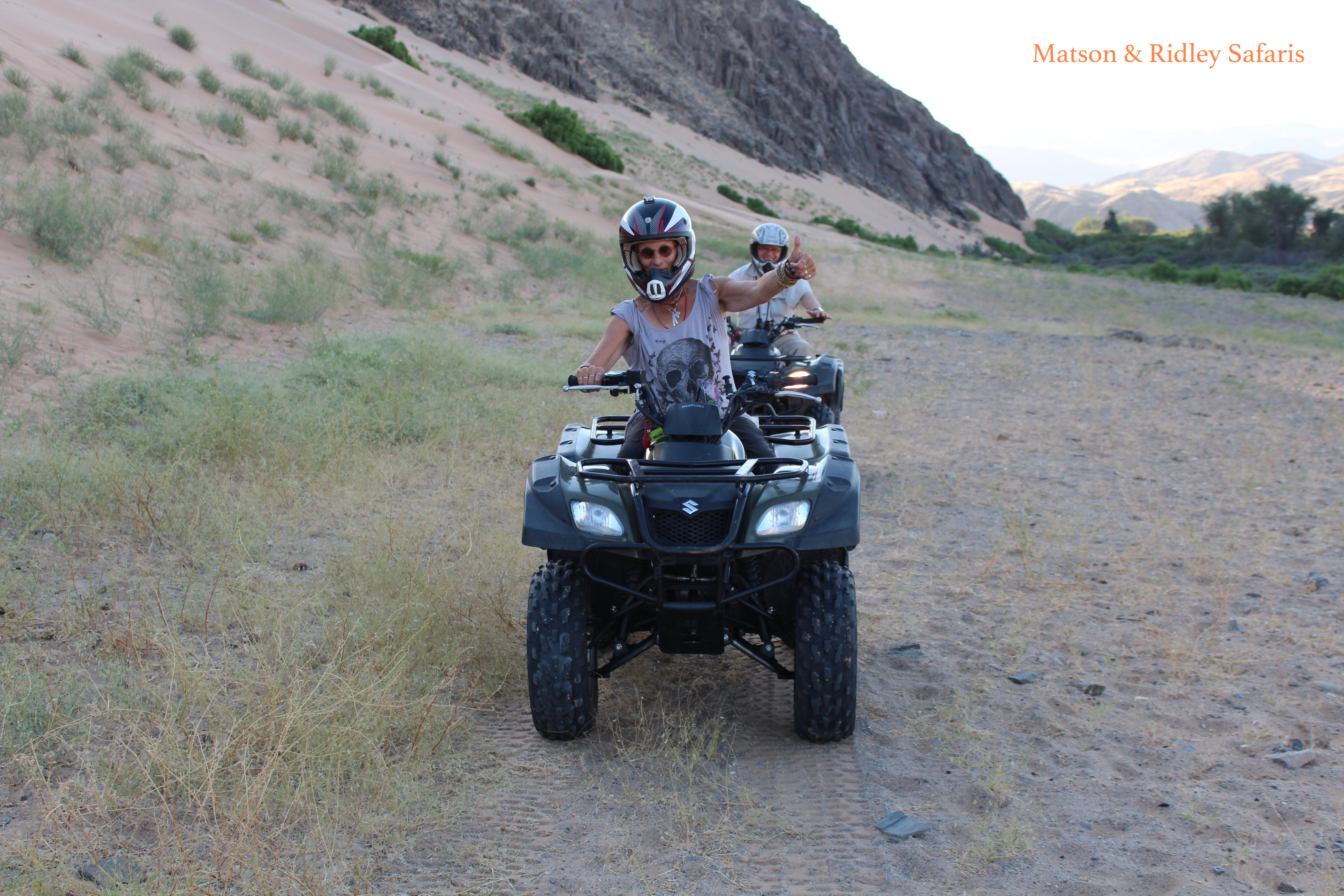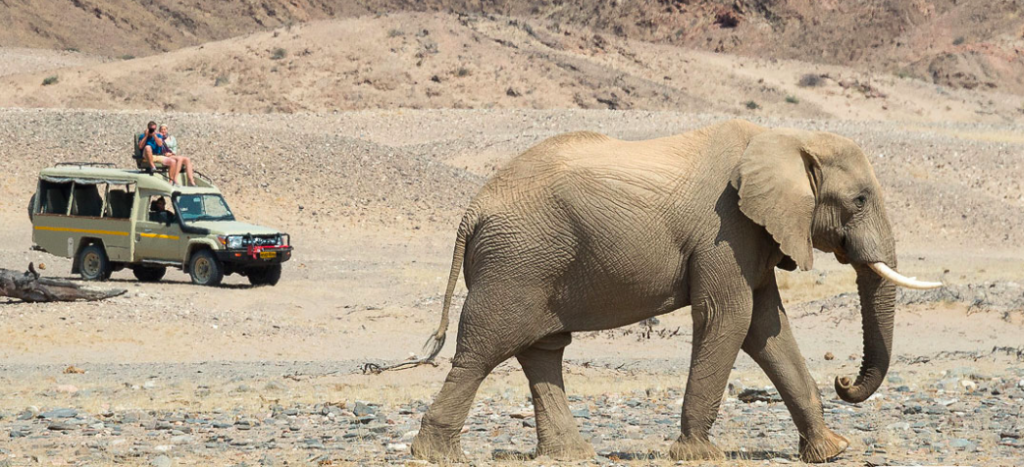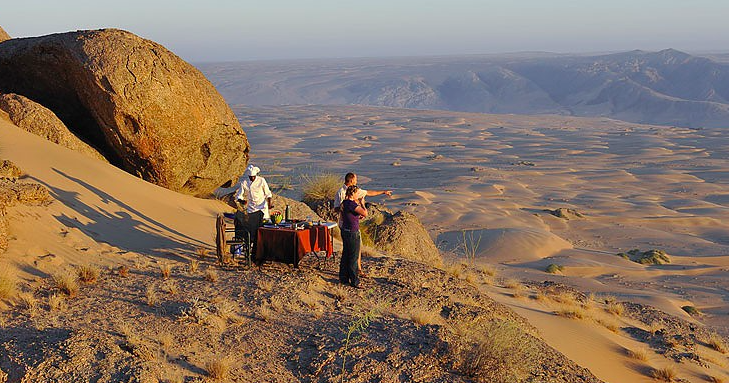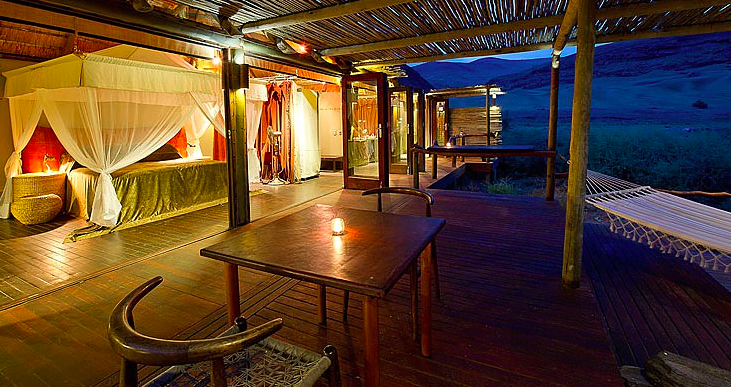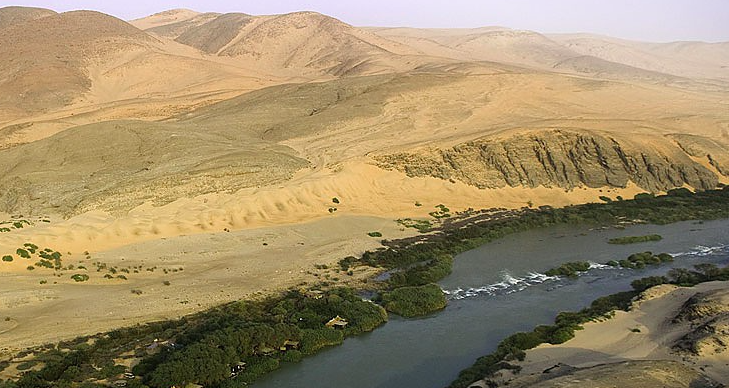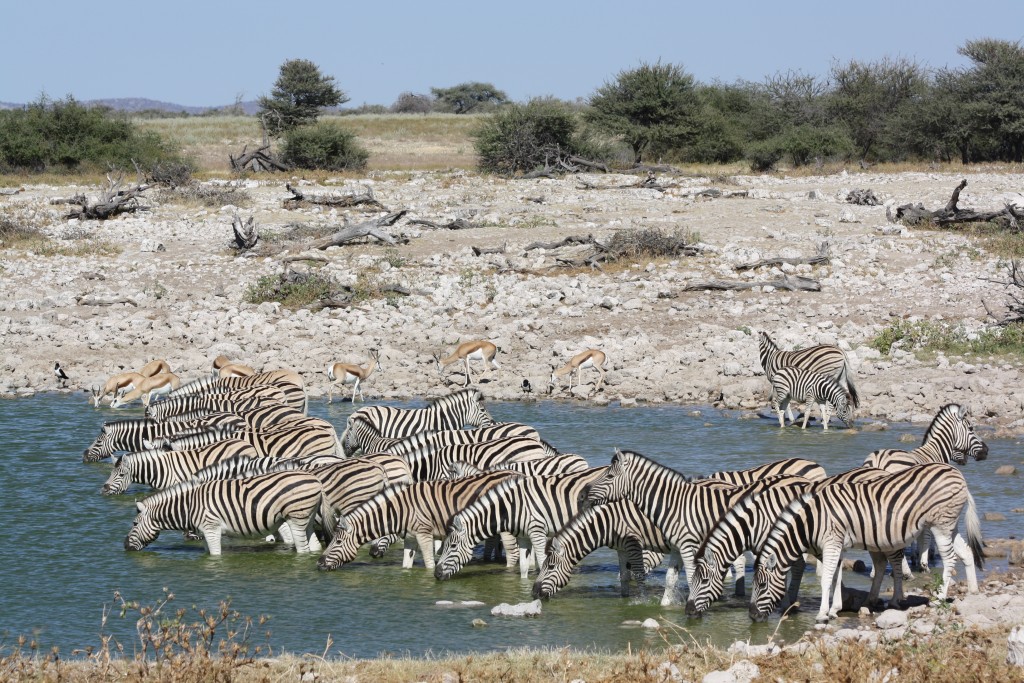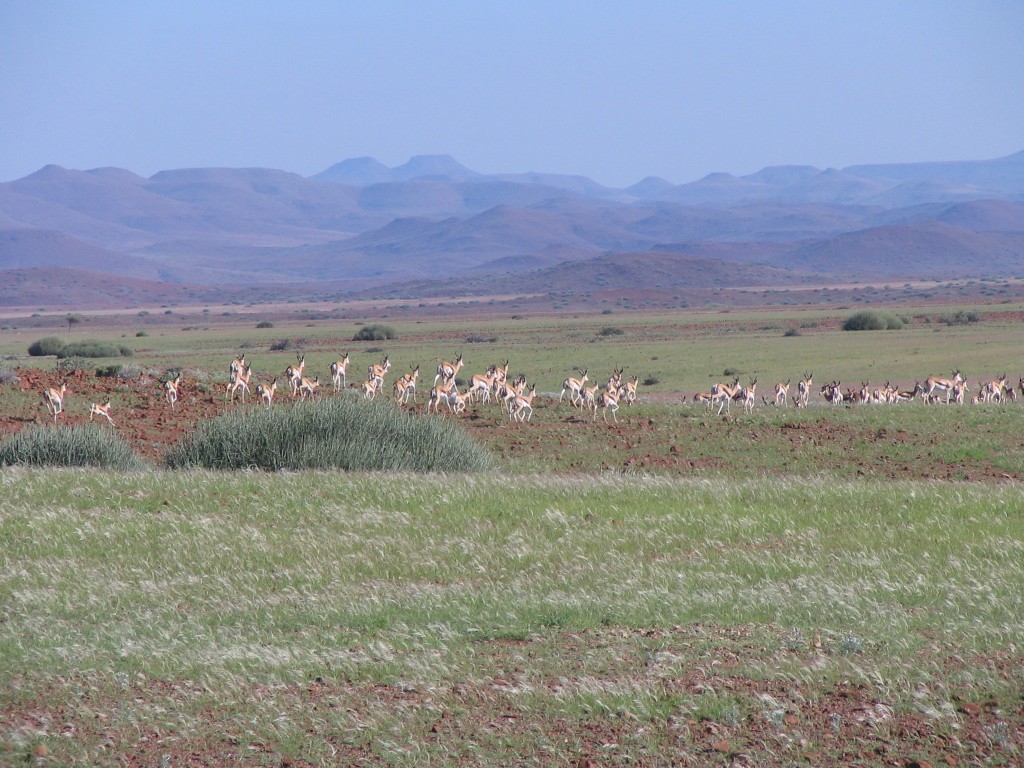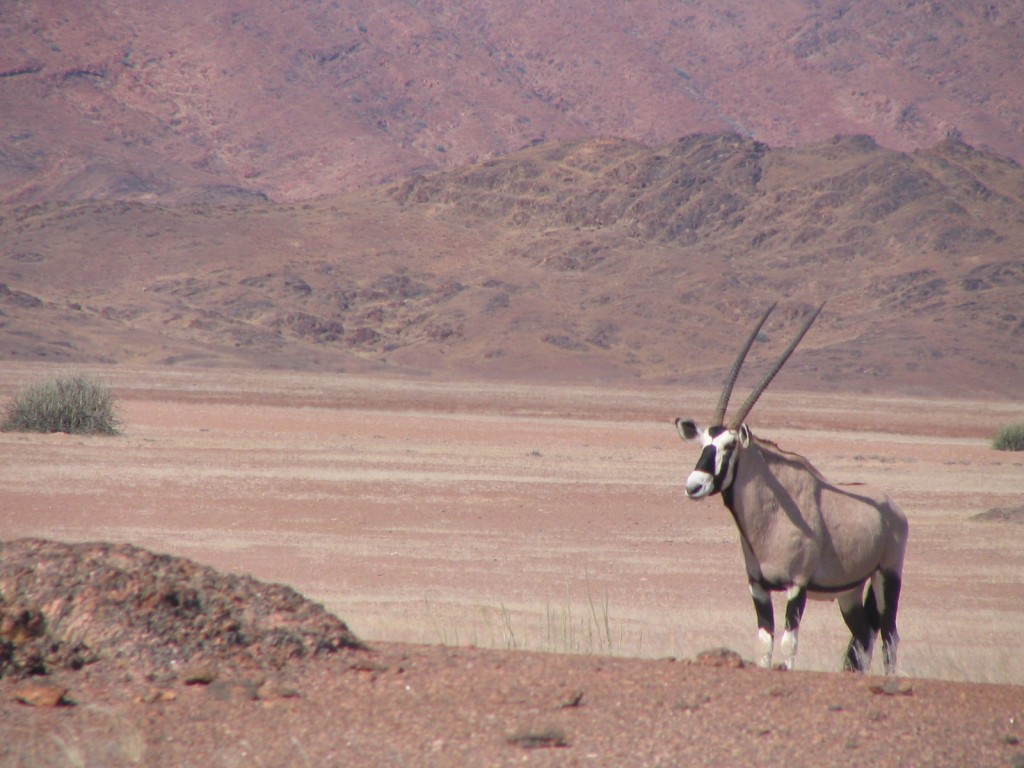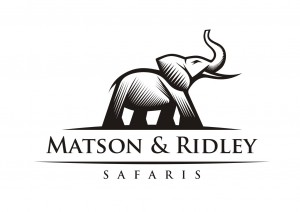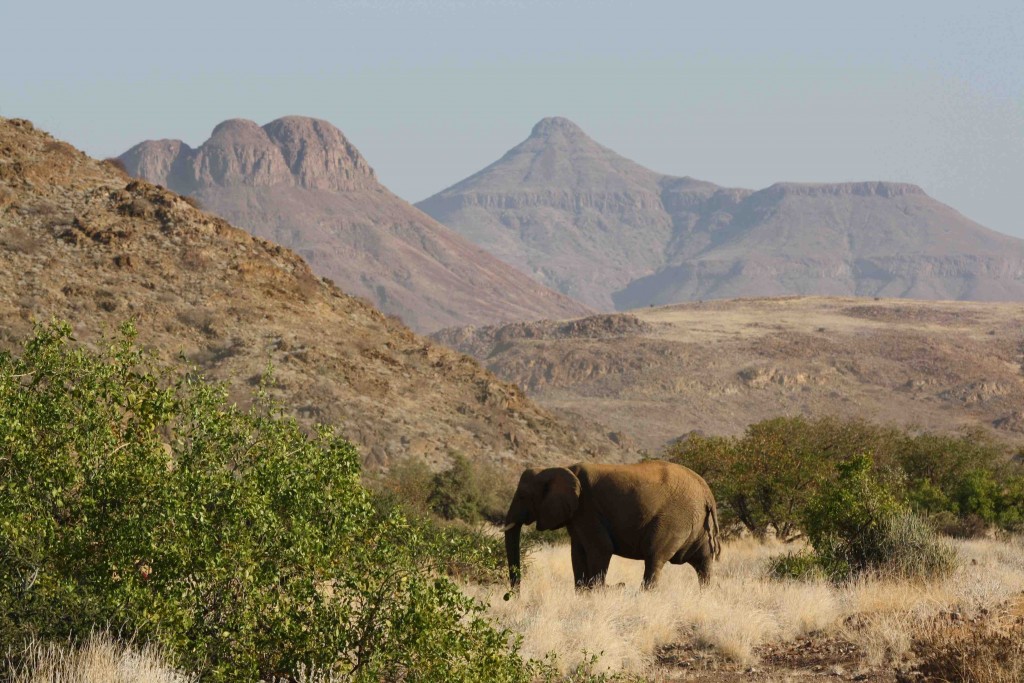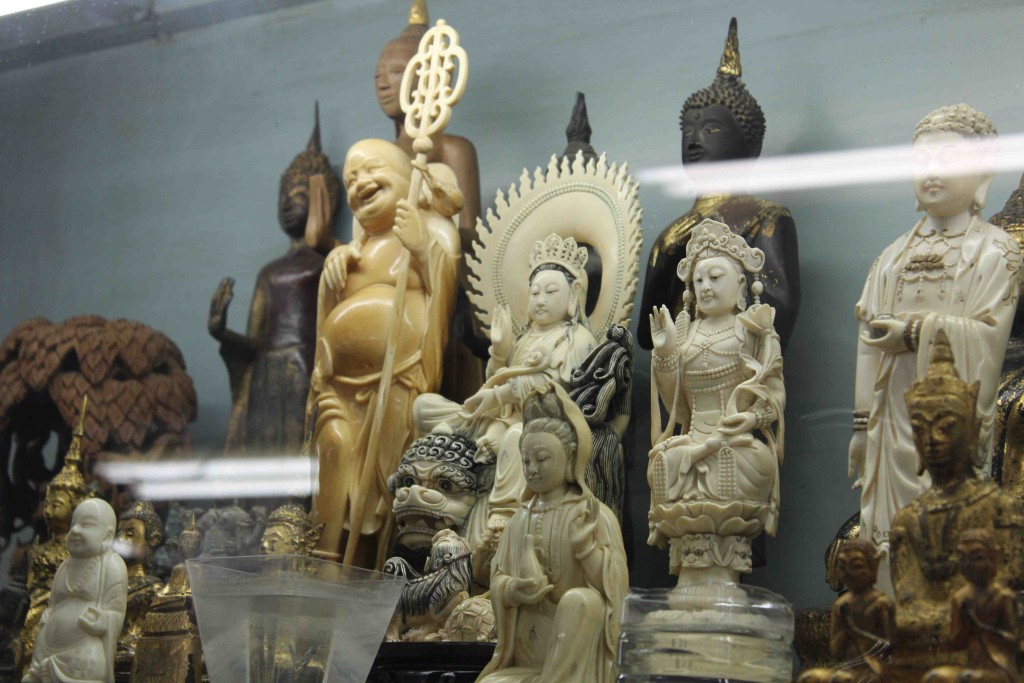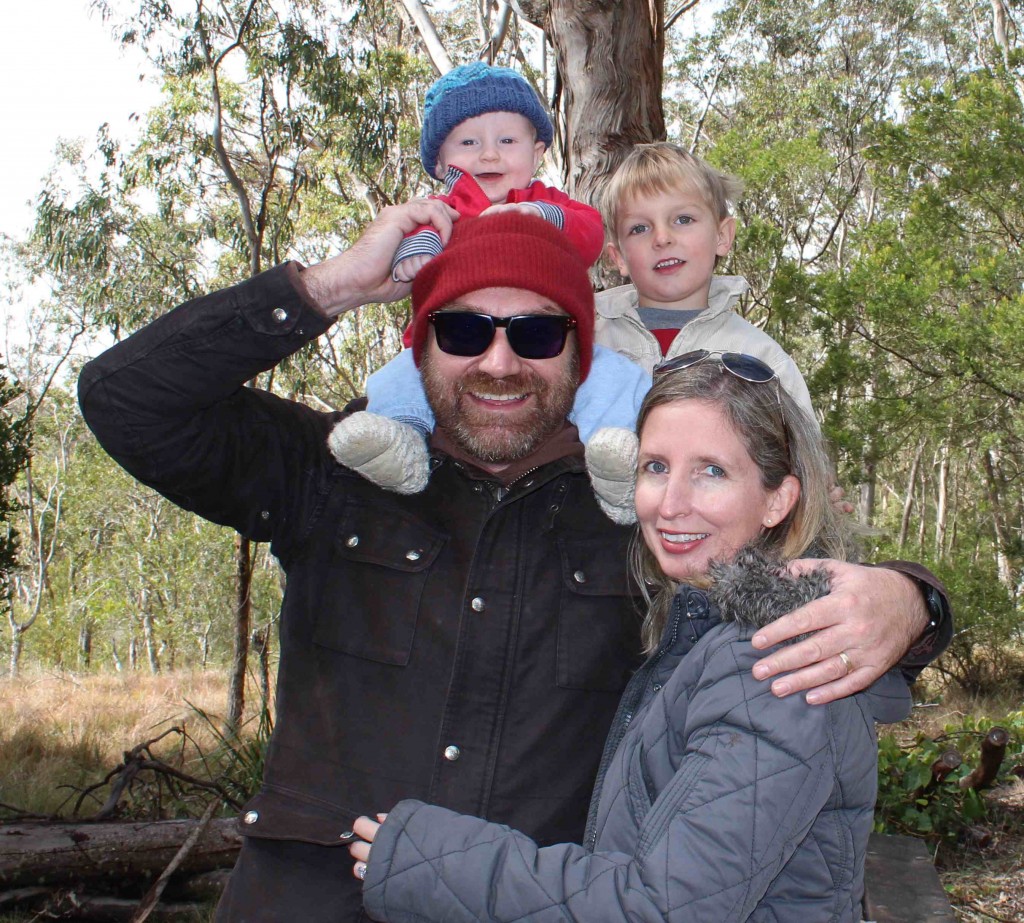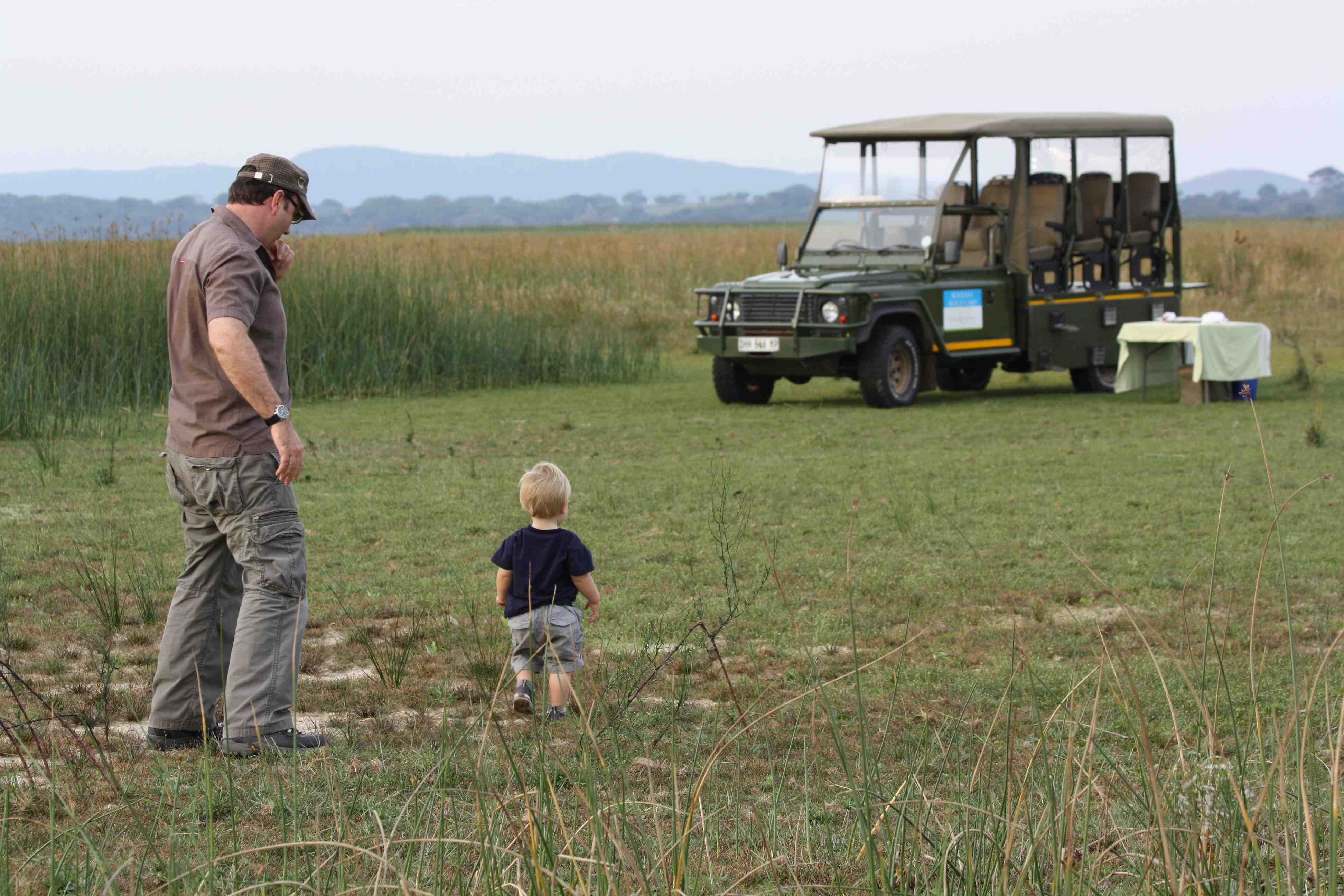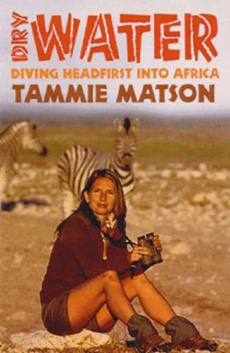Serra Cafema – a world away from everything
There are some parts of Africa that remove you so completely from reality that you start to wonder whether all that stuff that fills your life with worries in the ‘outside’ world really matters much. Serra Cafema Camp, in the Marienfluss Conservancy, is such a place, where traditional Himba people still live a life that is much like what it was several hundred years ago, where a river teeming with crocodiles slices through gothic mountains surrounded by sand dunes, where you can really find yourself by losing yourself in landscapes so primitive you can’t help but feel humbled. There’s no phone range or wifi up here so you can leave all that behind. And you know what – you probably won’t miss it one bit. It’s all about disconnecting to reconnect, as Wilderness Safaris puts it. This is the ultimate escape and a huge adventure.
Here’s my photos of one of my favourite parts of truly wild Africa, our escape to the most remote part of the land that God forgot, as promised in last week’s blog.
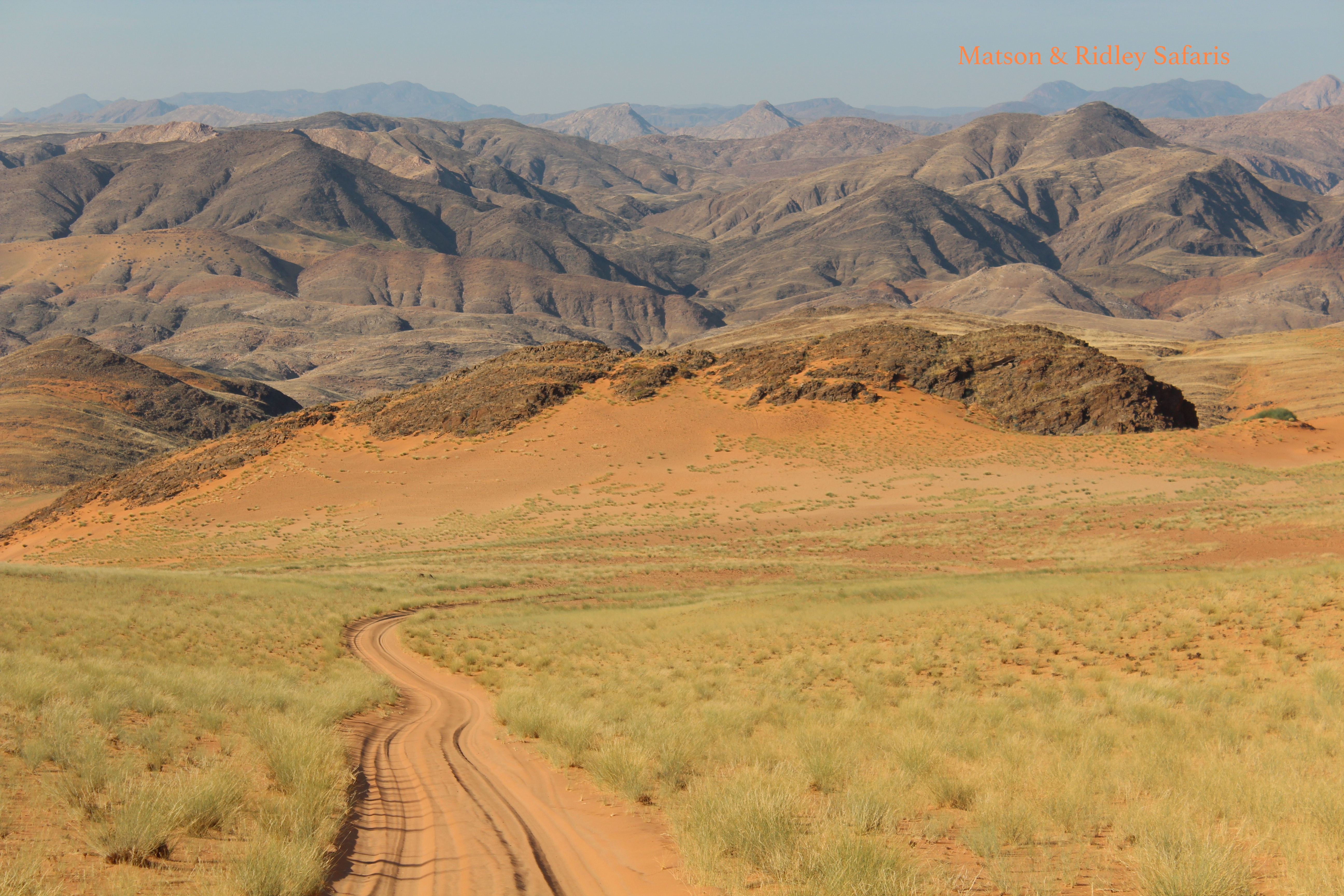
The road to ‘never never’ in the land that God forgot…. It takes several hours in a light plane to get to Serra Cafema from Namibia’s capital city, Windhoek, and then another hour or so to get to the camp itself. They don’t call it the most remote camp in southern Africa for no reason. But it’s worth it. You can’t imagine what it feels like to be in this primeval place with all that space around you without actually going somewhere like this. It’s like taking a step back in time and the colours are simply breath-taking.
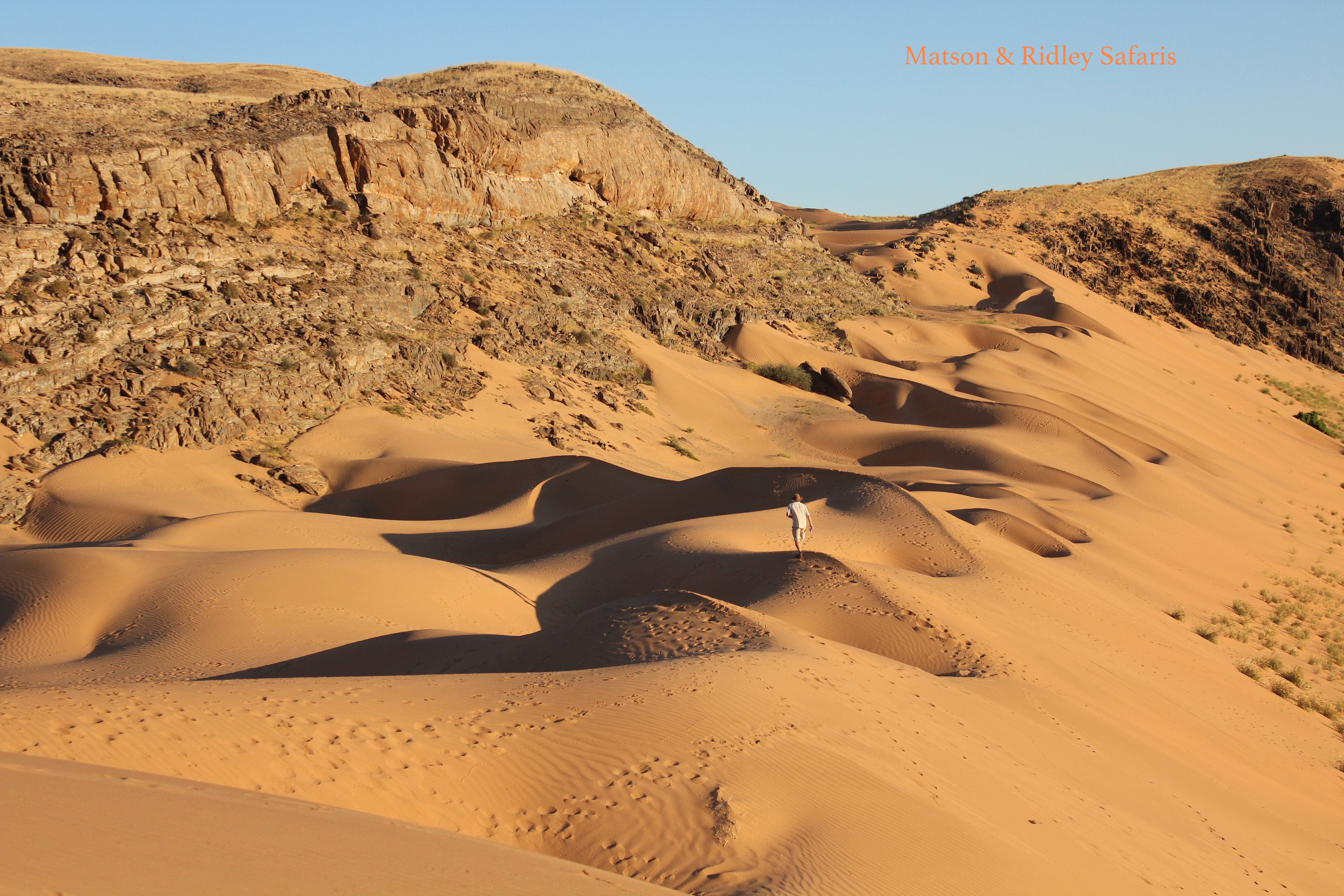
One of the best things about Cafema is that you can walk to your heart’s delight. Here’s one of our group members, Tristan, on a dawn walk in the dunes up behind camp. There used to be lions and elephants and even rhinos in north west Namibia, but the war up until 1990 when Namibia achieved Independence, wiped them all out. It would be incredible to see these species coming back and with the right ongoing management that is possible. Now the species you’re most likely to see in this region are springbok, oryx and ostriches, and for the lucky ones there are also endangered Hartmanns mountain zebras, with their distinctive thin black and white stripes without any shadow stripes. Predators like brown hyaenas and jackals live here too, as testified by their tracks in the sand near camp.
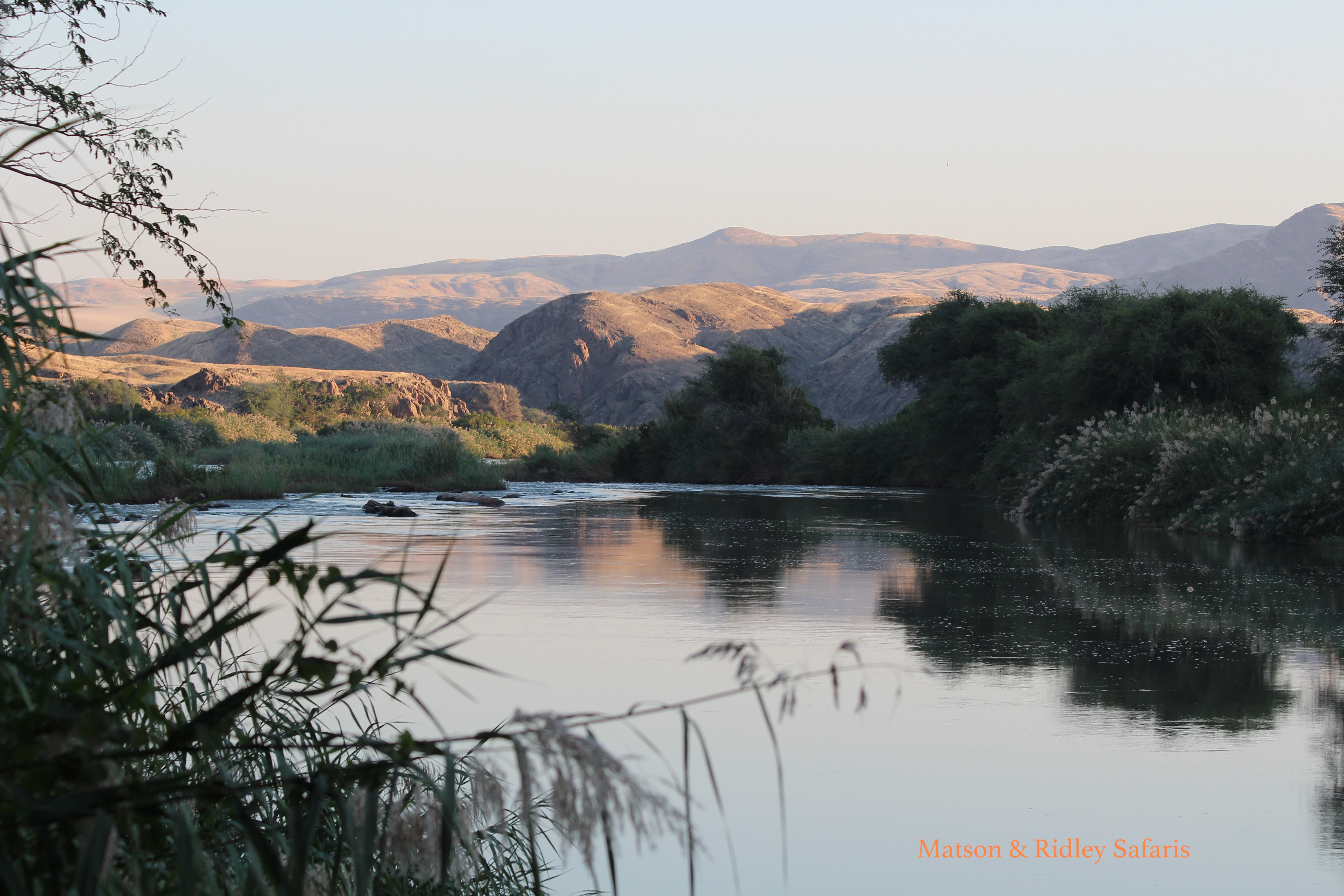
This is the view of the Kunene River that you get on the deck of the main area at Serra Cafema Camp. The luxurious camp is nestled under big shady Ana and Acacia trees and is truly an oasis in the middle of nowhere. You walk to your room along wooden walk ways on stilts. That’s Angola across the river, the Kunene marking the boundary. All day and night you can hear the rapids upstream. The contrast of being in the desert dunes so far from any kind of civilisation with this rushing river that originates in the highlands of central Angola and floods out through the Skeleton Coast to the Atlantic Ocean is mind blowing. But above all, it’s incredibly relaxing. A swim in this river is not recommended, and you’ll see why if you scroll down….
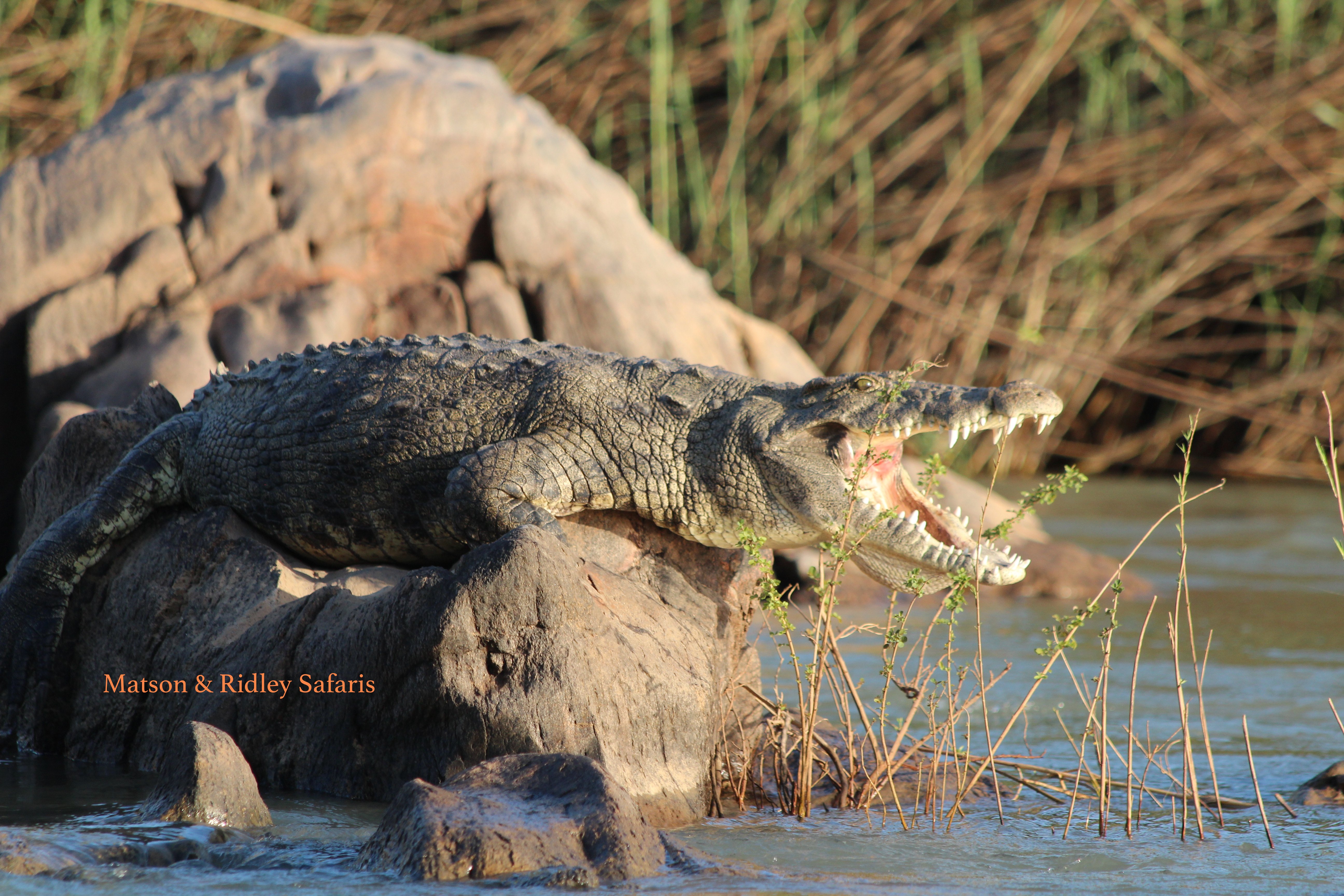
Nile crocodile, sun bathing…. One of the most fun activities at Cafema is an afternoon boat ride up the Kunene River, where you have a good chance to see crocs like this guy sunning in the late afternoon, and abundant bird life. Just before the sun sets the guides pull up at a sand bank on the Angolan side and lay out sun downers fit for kings and queens. It’s a really tough life!
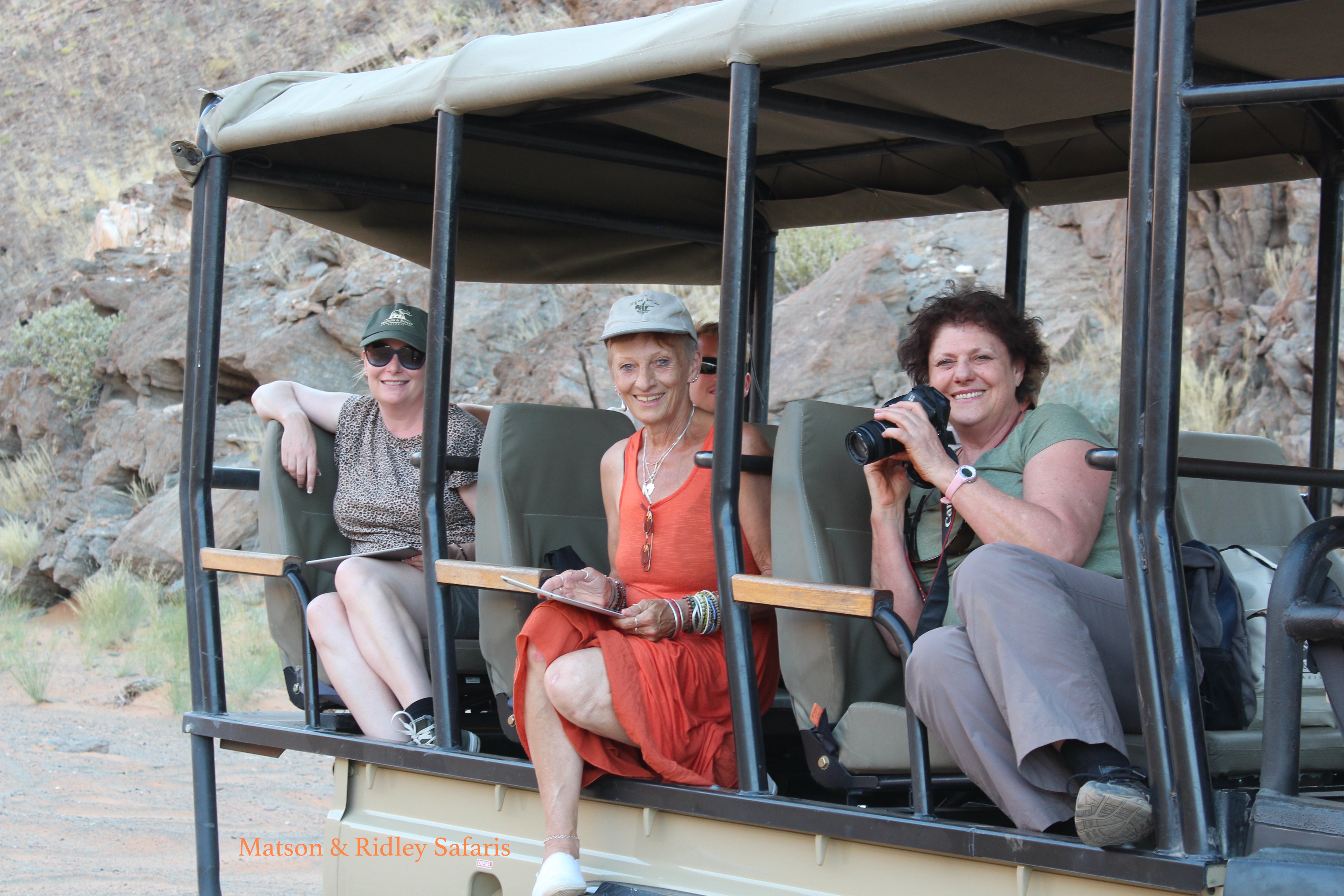
The ‘3 Ozzies’, Joanne, Maggie and Leonie, watching the rest of our group in the other vehicle come down the dunes on the drive into camp. There are some adrenaline rushes as the 4x4s slide down certain roads on steep dunes, which of course the guides do all the time, but the first time you do it you really wonder if you’re going to survive!
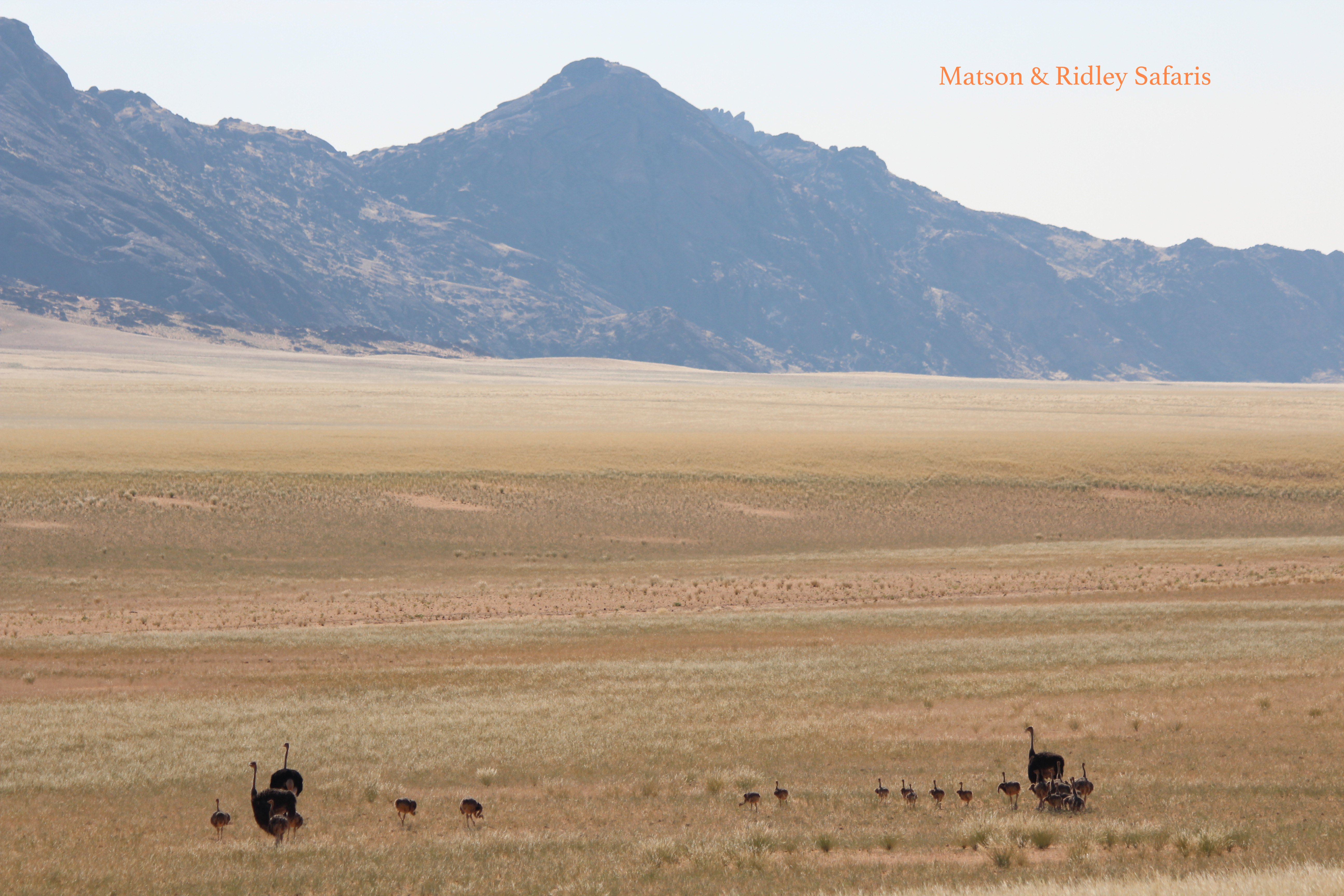
It hadn’t rained in this area for about 5 years, according to our guides, and then 3 months before our visit, the heavens smiled and granted the Hartmanns Valley a generous serve of much needed rain. The result was incredible scenes like this where usually there is only sand, now valleys filled with grass. These ostriches were clearly still celebrating with a large flock of youngsters, taking advantage of the good times to reproduce.
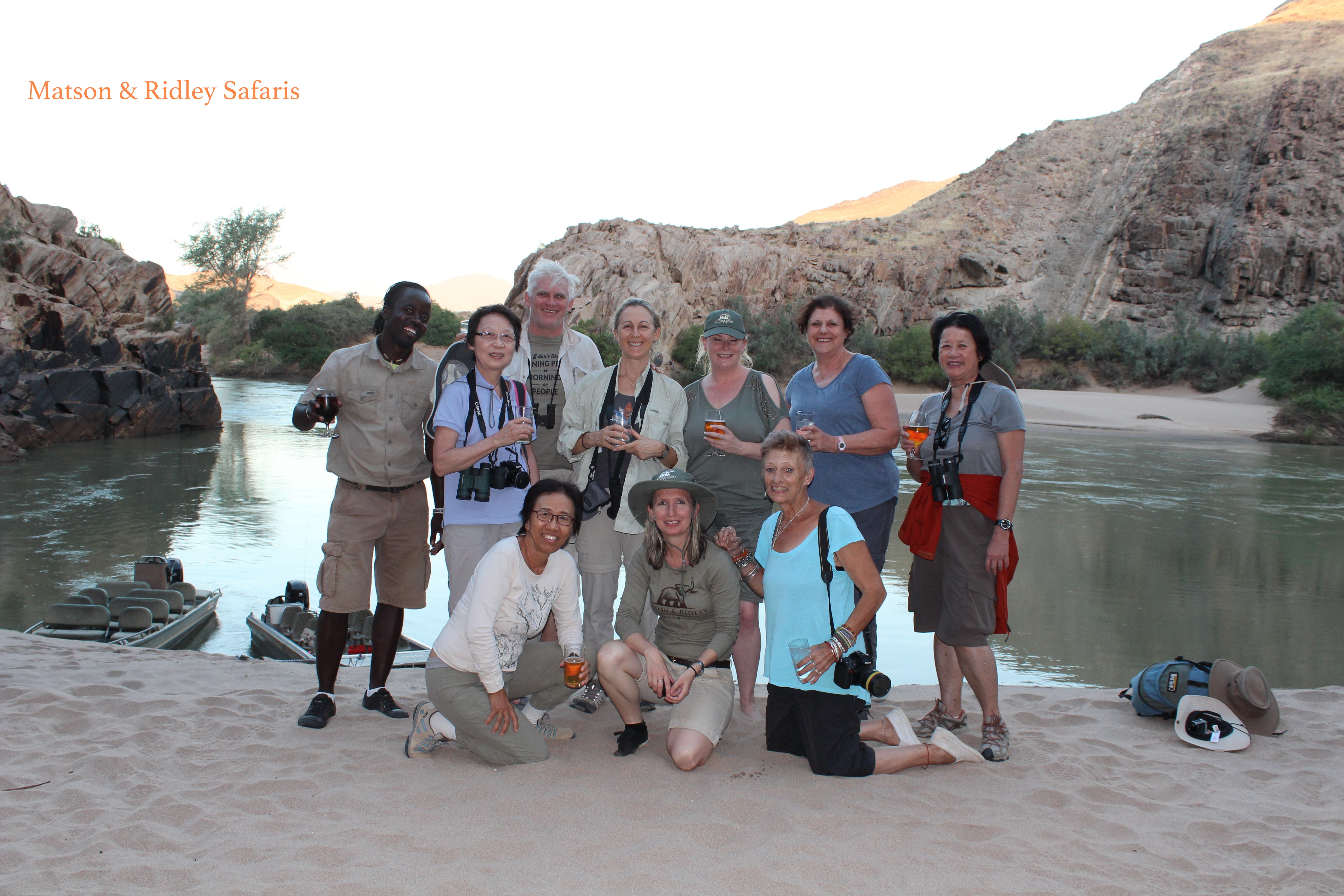
Here we all are having sundowners on the Kunene River with one of our Himba guides, Timo – on the Angolan side without a passport! Back row: Timo, Patricia, Tristan, Carina, Joanne, Leonie, Helen. Front: Chuan Fong, me and Maggie.
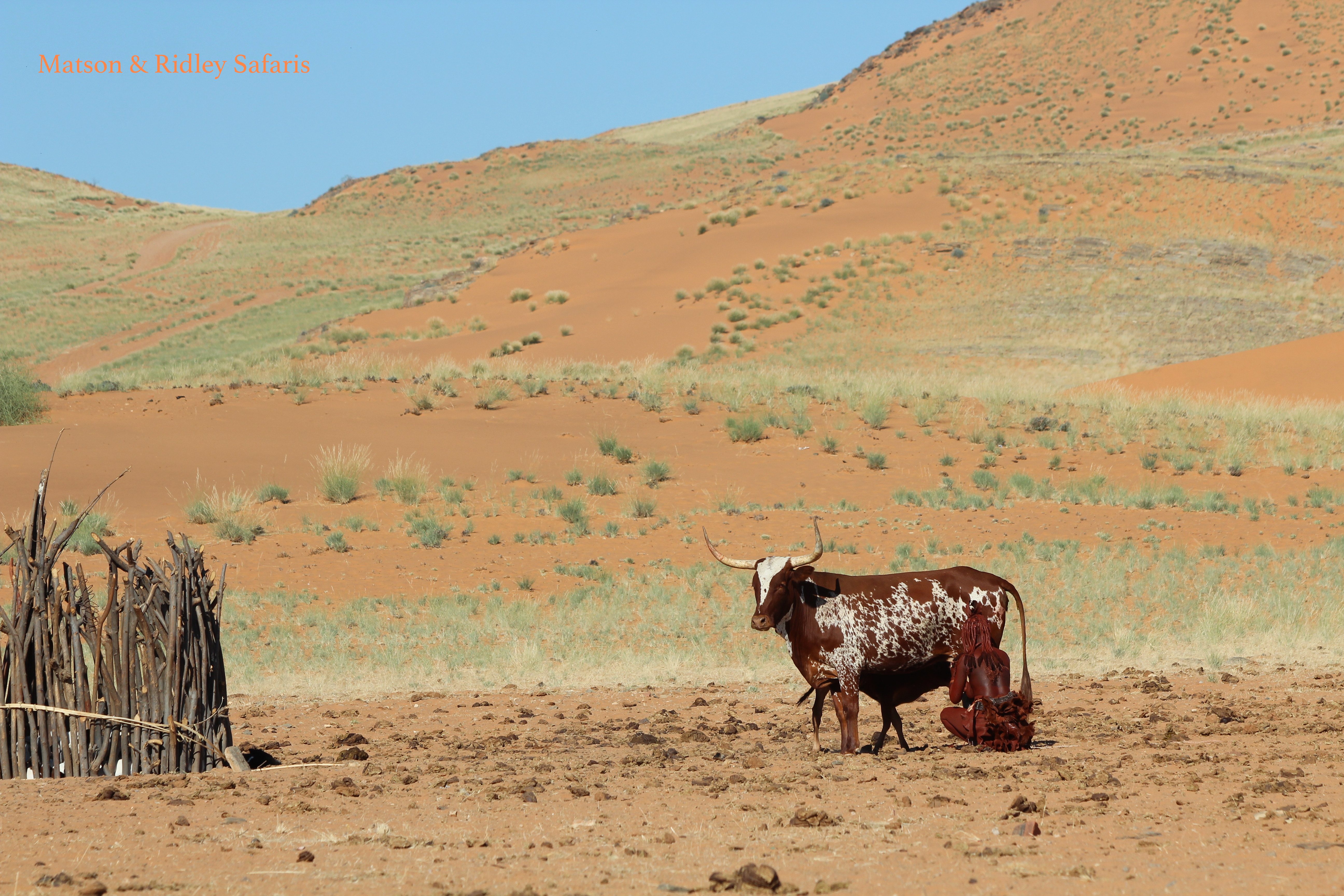
Of course, probably the most special part of the Serra Cafema experience is meeting the Himbas. The Himbas are in a joint venture partnership between Wilderness Safaris who operate the camp and the Marienfluss Conservancy, owned and run by the local people. Our guide Stanley described his people, the Himbas as one of the ‘richest’ tribes in Africa because they have so many cattle. Cattle are the currency in many parts of Africa, used in dowries for marriage and many other exchanges. The Himbas are excellent cattle farmers, semi-nomadic people who move with their cattle to better grazing as needed. I’ve seen this part of Namibia much drier than this and sometimes it’s hard to believe any cow would get a meal out of the amount of vegetation available. They live on milk from the cows and occasionally meat from a goat, trading to get pap (porridge made from ground corn or mealie meal), but they eat very little in the way of vegetables/fruit. Yet superficially they seemed very healthy to us and no doubt the rains brought great rejoicing in this part of the world.
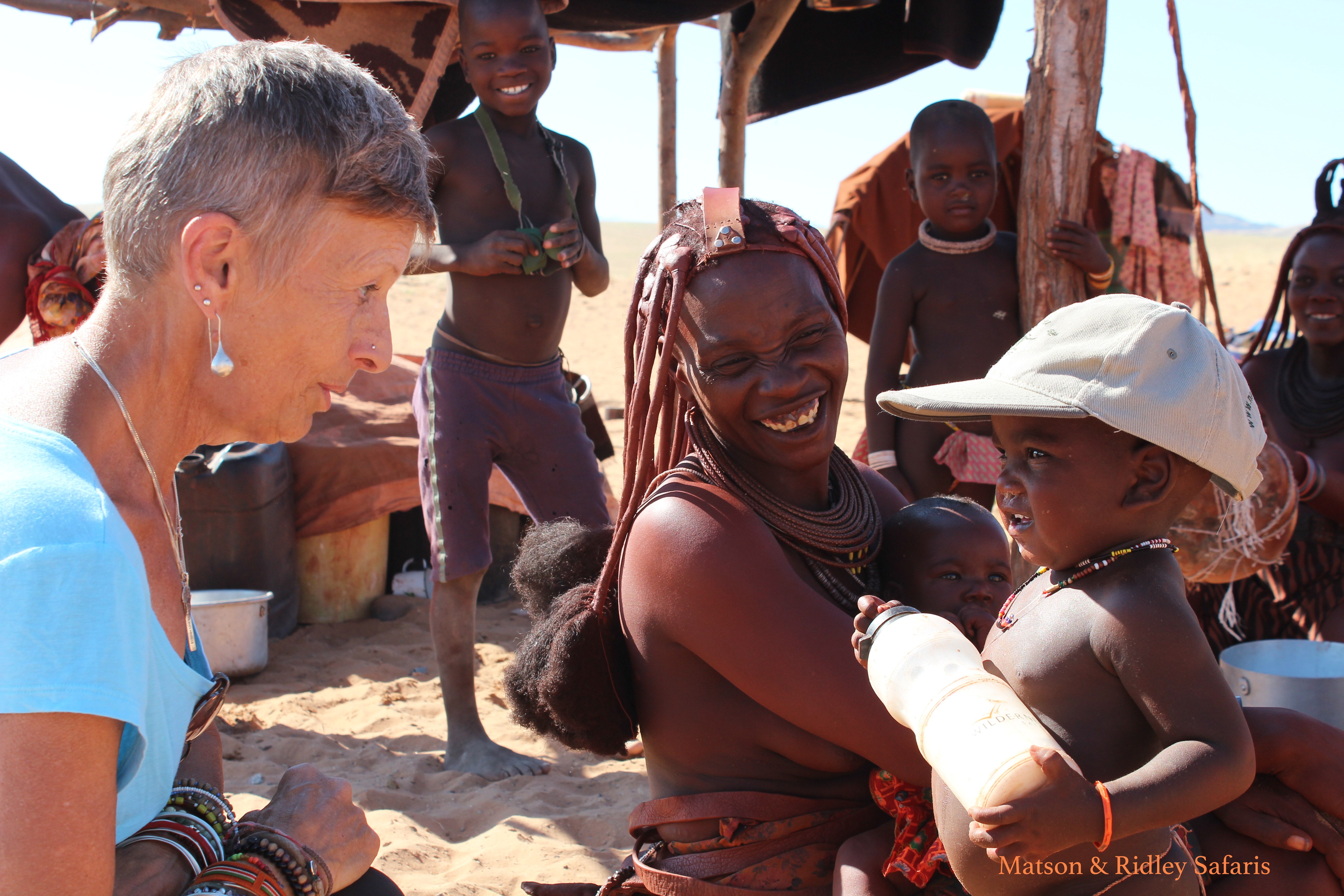
Interacting with the Himbas is really special and definitely a highlight of the visit. Here Maggie has a chat to a little Himba boy who clearly seemed to be enjoying the one-on-one, as mum watched on beside him with her young baby.
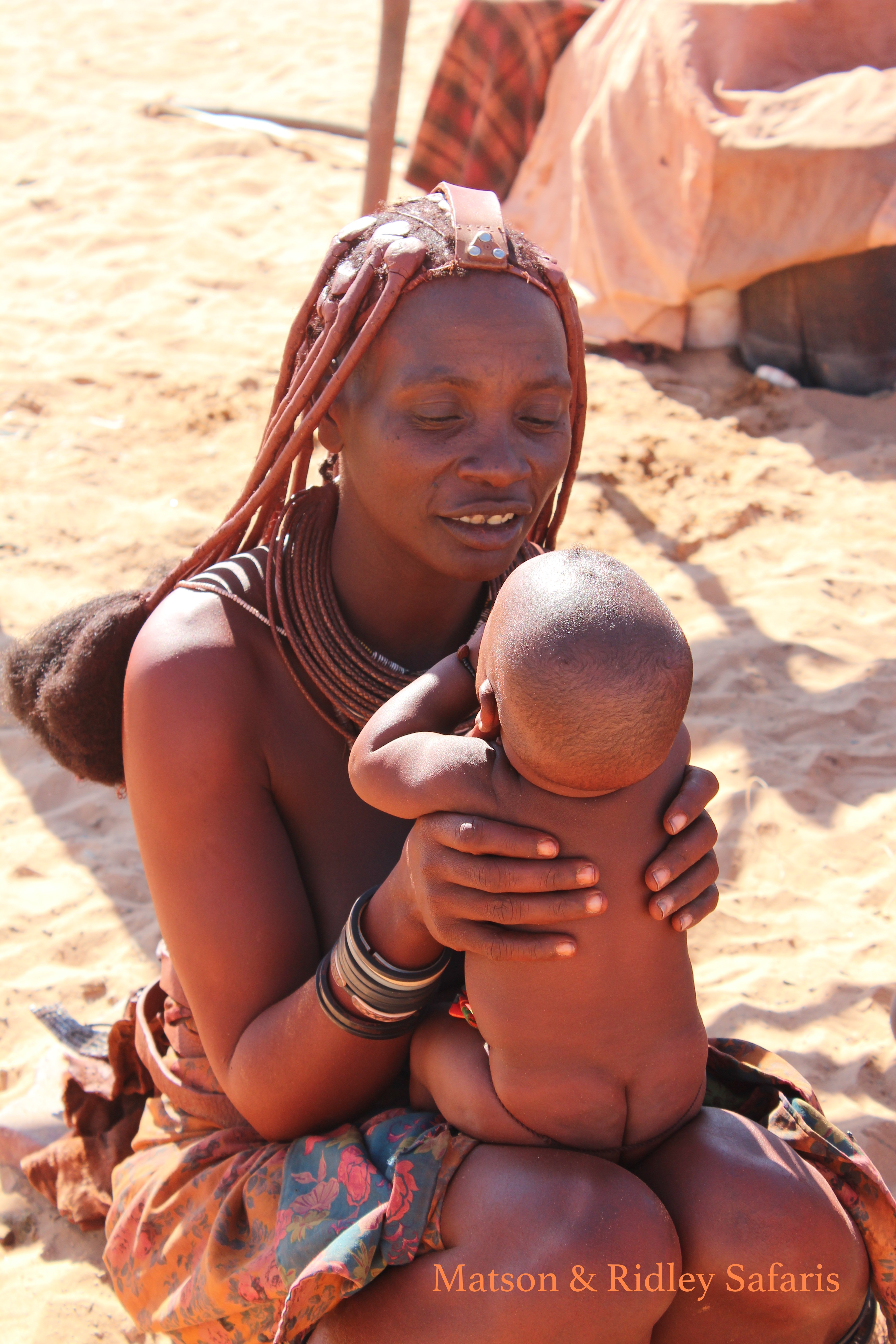
I’ve always loved watching the Himba women with their small babies. The look on the mother’s face above makes you think she could be any mother in the world. The ‘midwife’ who helps the women give birth is the old grandmother in the village. There are no medical doctors or hospitals out here.
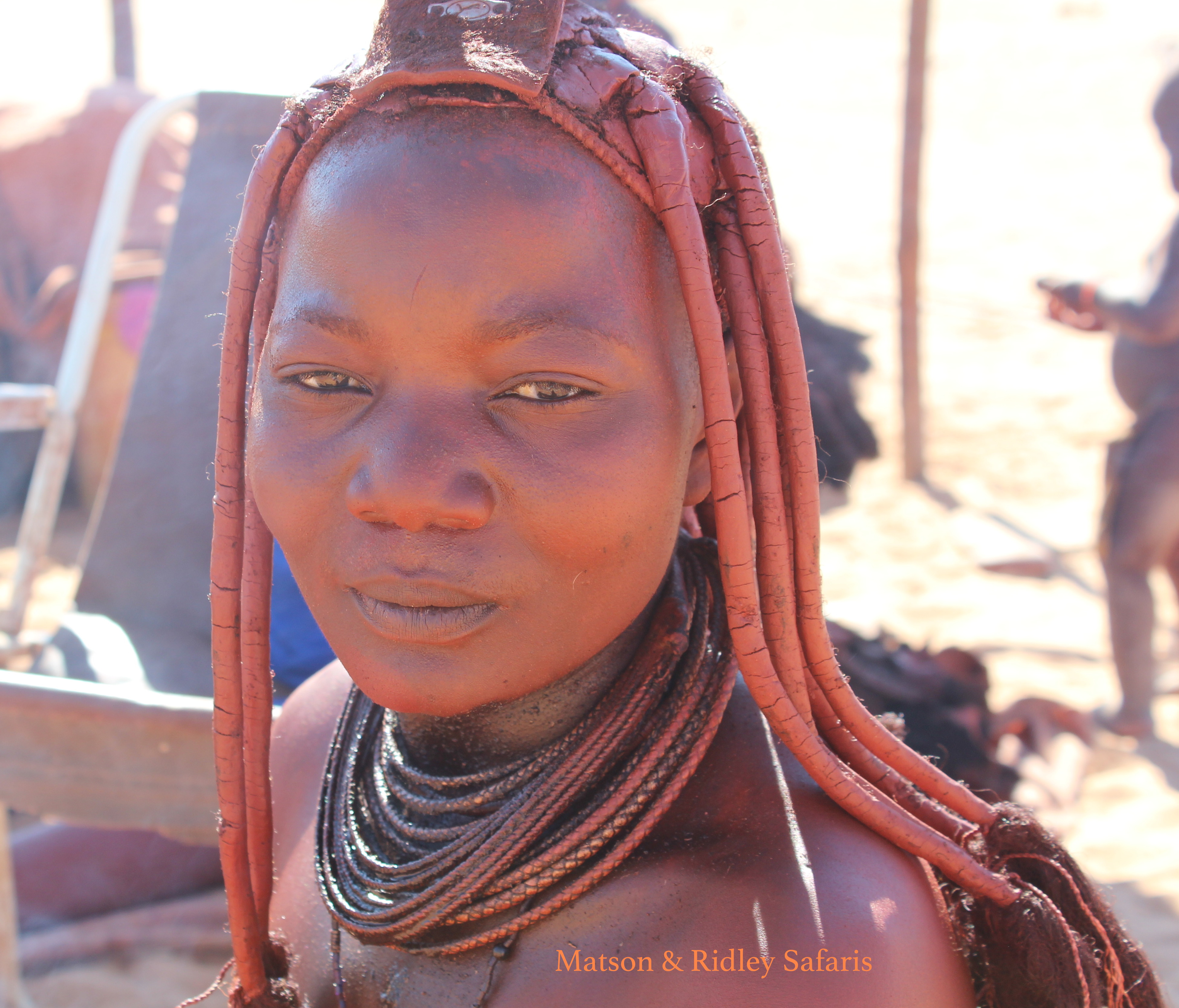
Women in Himba culture wear a special head dress if they are married. The red ochre that they cover their bodies with acts as a sunscreen and a moisturiser, but it’s also there for beautification purposes. Himba society is polygamous; men can have several wives. Let’s just say feminism hasn’t hit Himba society yet and I don’t think it will for a while!
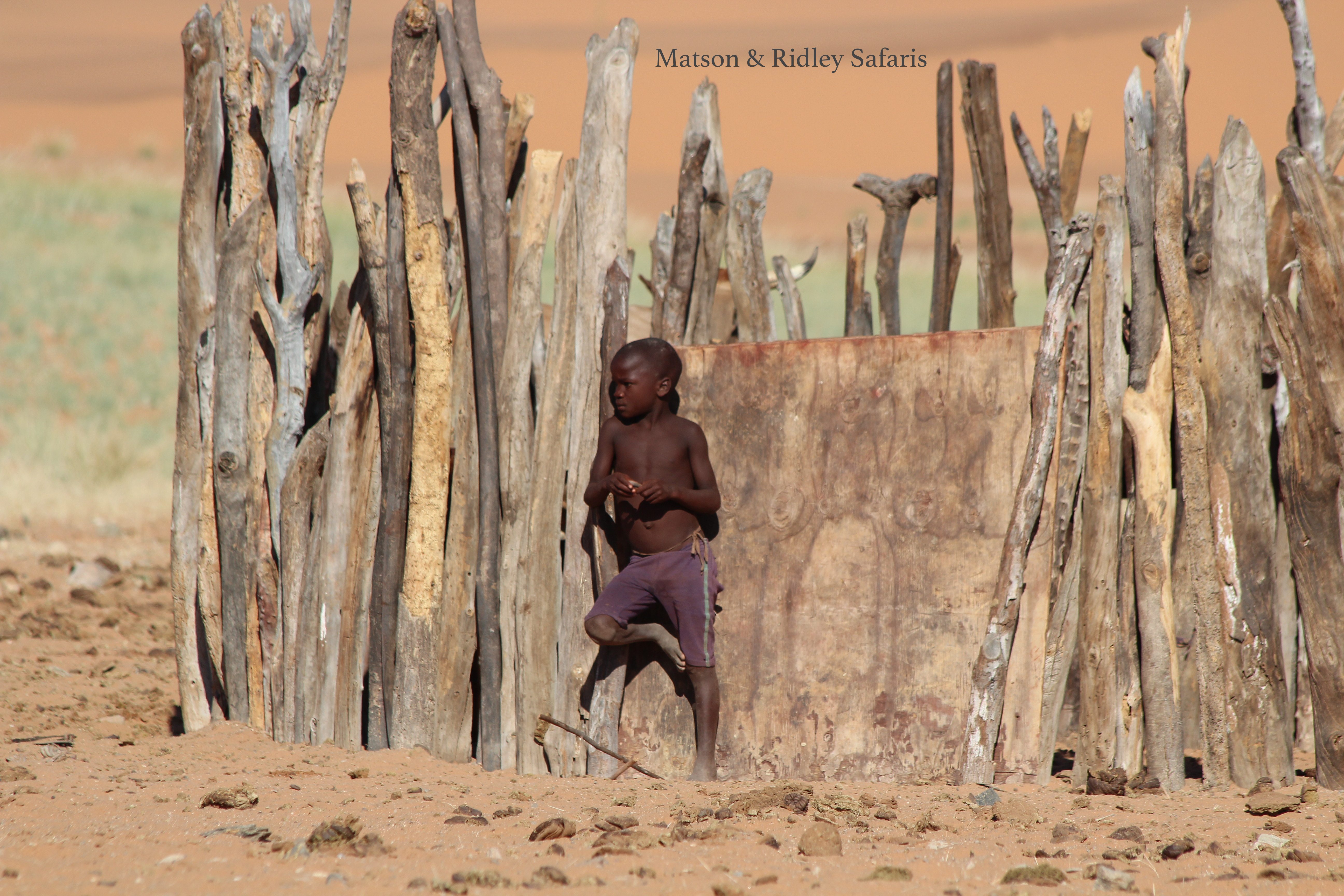
Some of the kids now go to school, but not all of them. It’s easy to see how going to school could bring conflicts into the lives of these very traditional people, even though it’s important that they are represented and have their say in the country where they are a minority population-wise. Education is essential for this but it doesn’t come without challenges. One of our guides, Stanley explained how he had been educated at a Christian school and this had created a conflict in him. Now that he believed in the bible because of his school, he explained, it was hard for him to feel okay with the Himba worship of the ancestors in the ancestral fire. The two didn’t go together well. It was explained to us that the Himbas believe that when you die, you go into the ancestral fire and you are still ‘there’ with the people, accessible through the fire, but not really gone. I’m not sure I’ve got that 100% right, but it’s certainly not a philosophy that sits too easily with Christianity. So I could see how bringing in modern ways of thinking from the outside world would be seen as a threat to Himba culture and tradition.
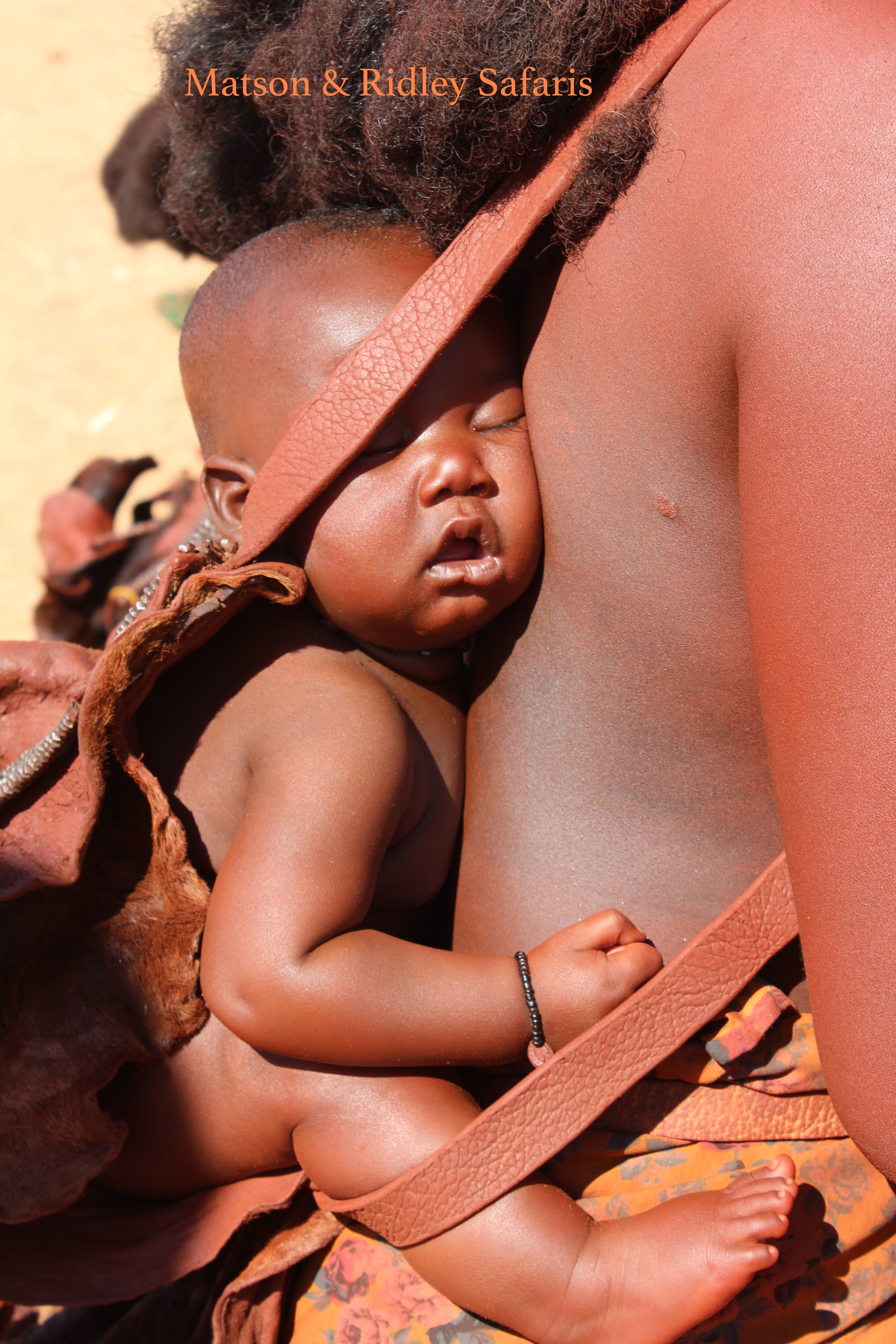
As soon as she strapped him onto her back, this baby fell right asleep. Mum resumed her work as if he wasn’t even there!
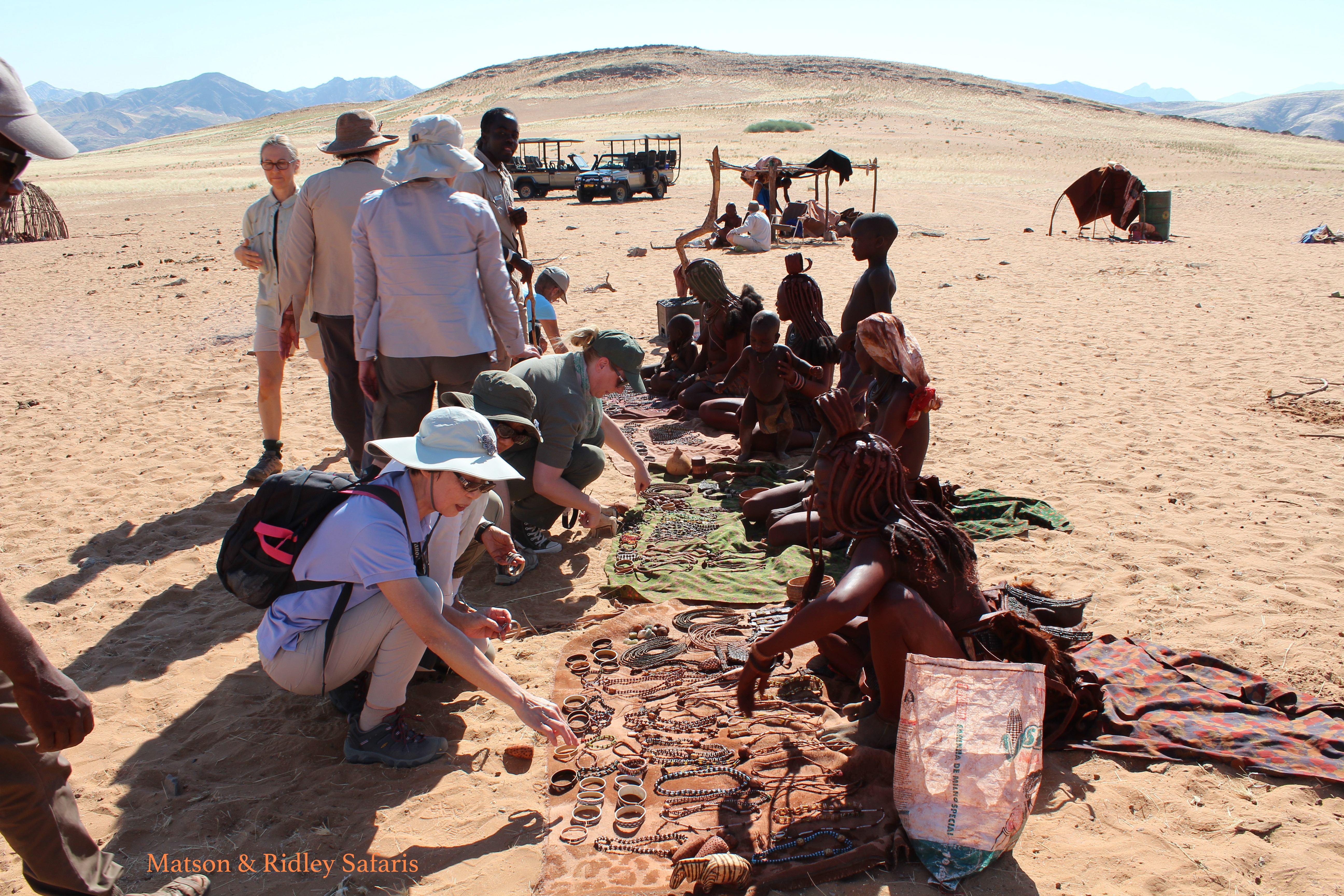
The Himba women seemed thrilled to be able to sell some of their jewellery to our group. I think we made a good contribution to their small businesses!
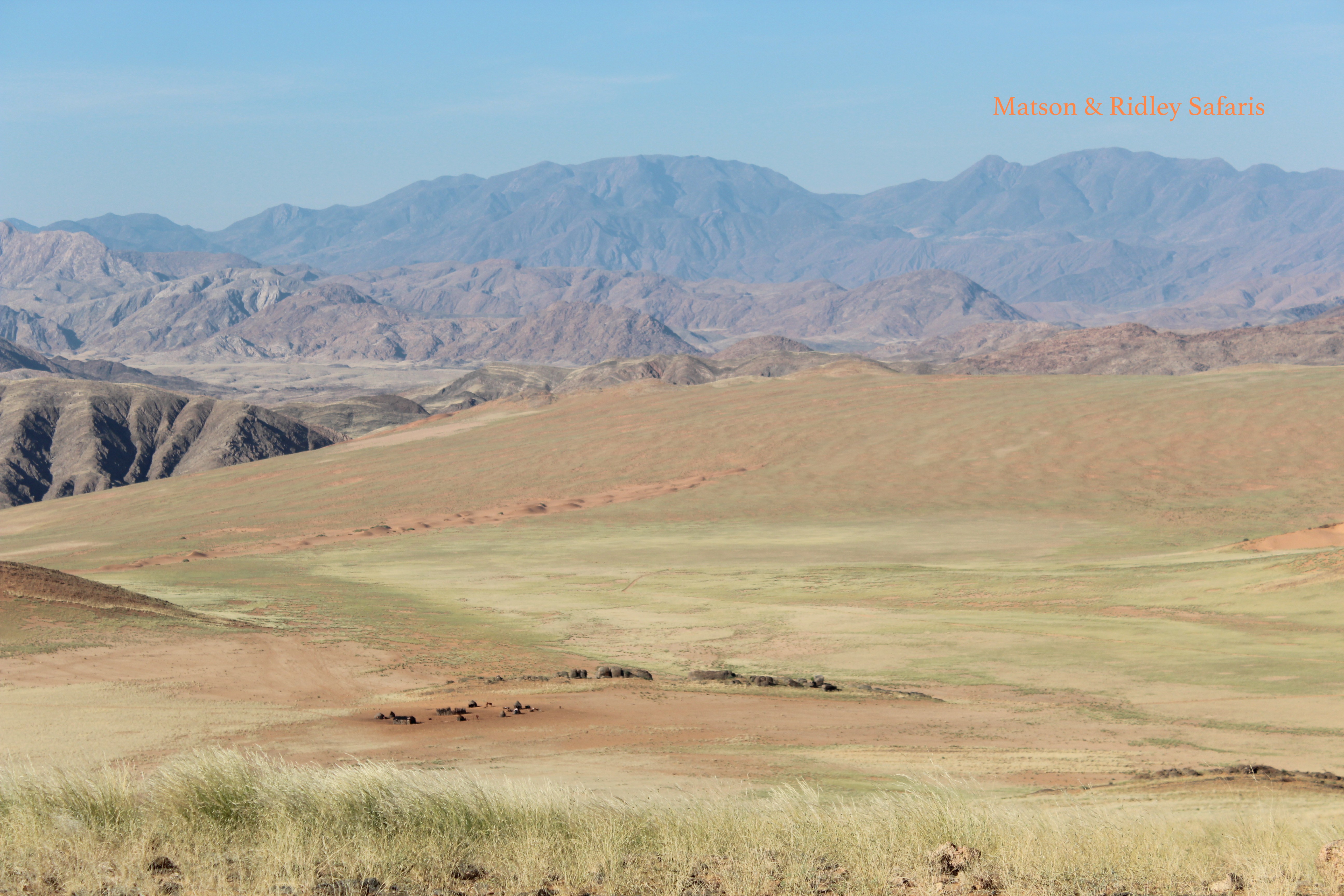
In the foreground in this picture you can see the Himba village. If only our own cities were as unobstructive in the landscape as theirs! That’s the hills of Angola in the background.
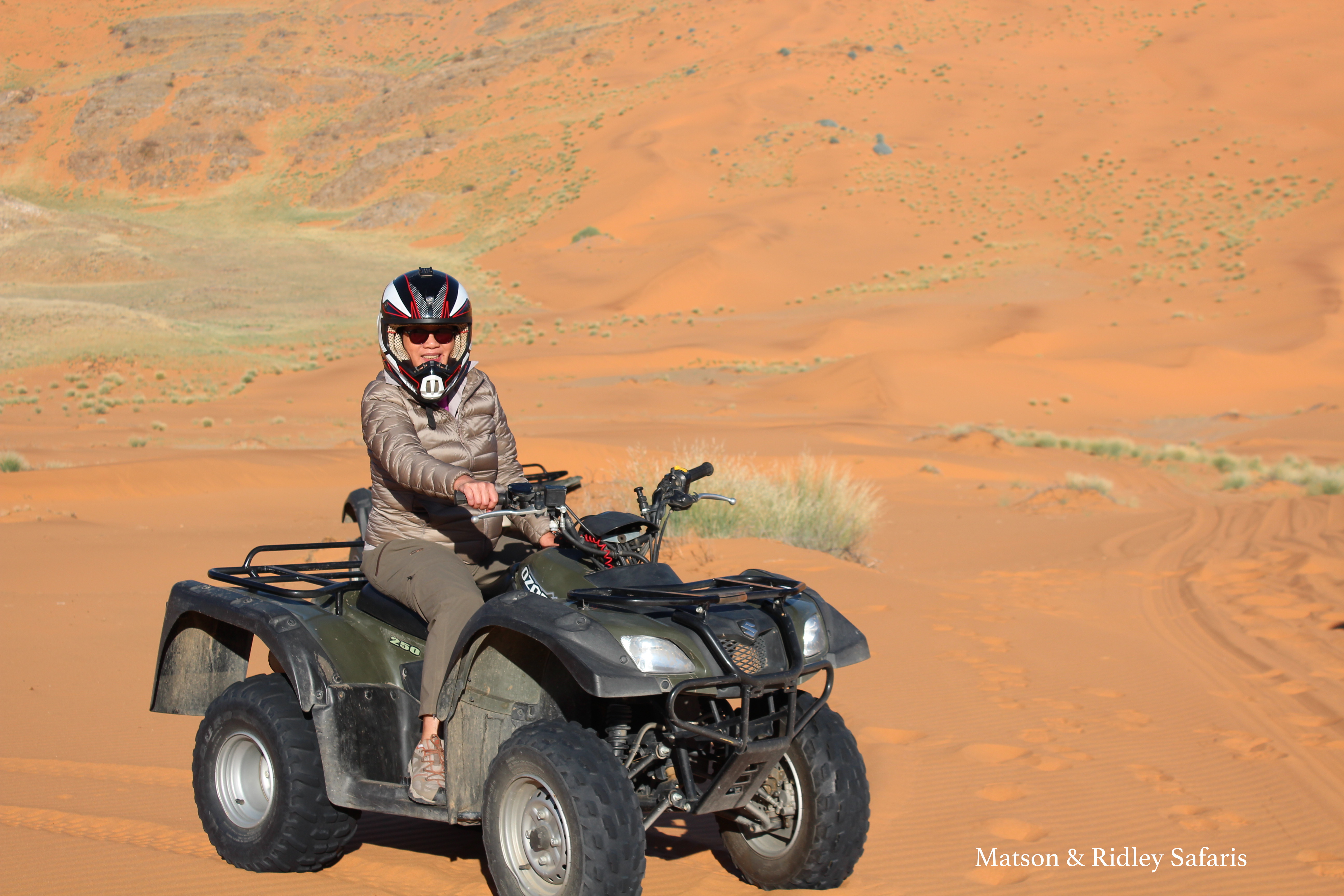
One of the fun adventure activities you can do at Cafema is hop on a quad bike and explore the landscapes from behind the wheel of your very own crazy demon 4×4. Here’s Helen just as we were about to take off. For some of my group, this was the first time on a quad bike. They are easy to use and don’t take long to get the hang of. It’s an awesome way to explore the area, and a whole lot of fun too!
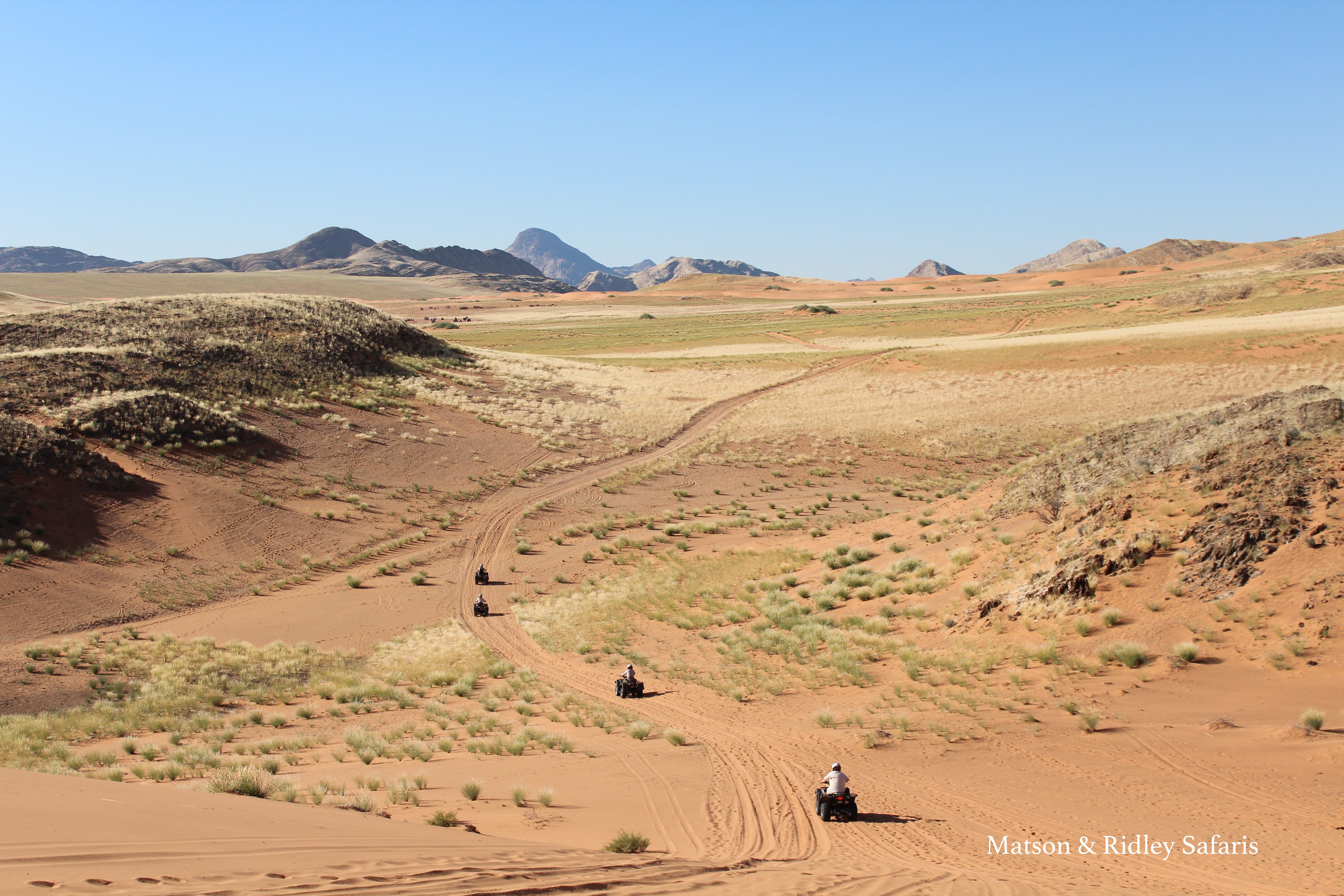
On the last morning, after a special request from Helen, those of us who wanted to were able to quad bike our way all the way to the airstrip. What a thrill this was! One of the most incredible things was watching hundreds of springboks congregated on the plains running through the grass as we drove by. Absolutely unforgettable.
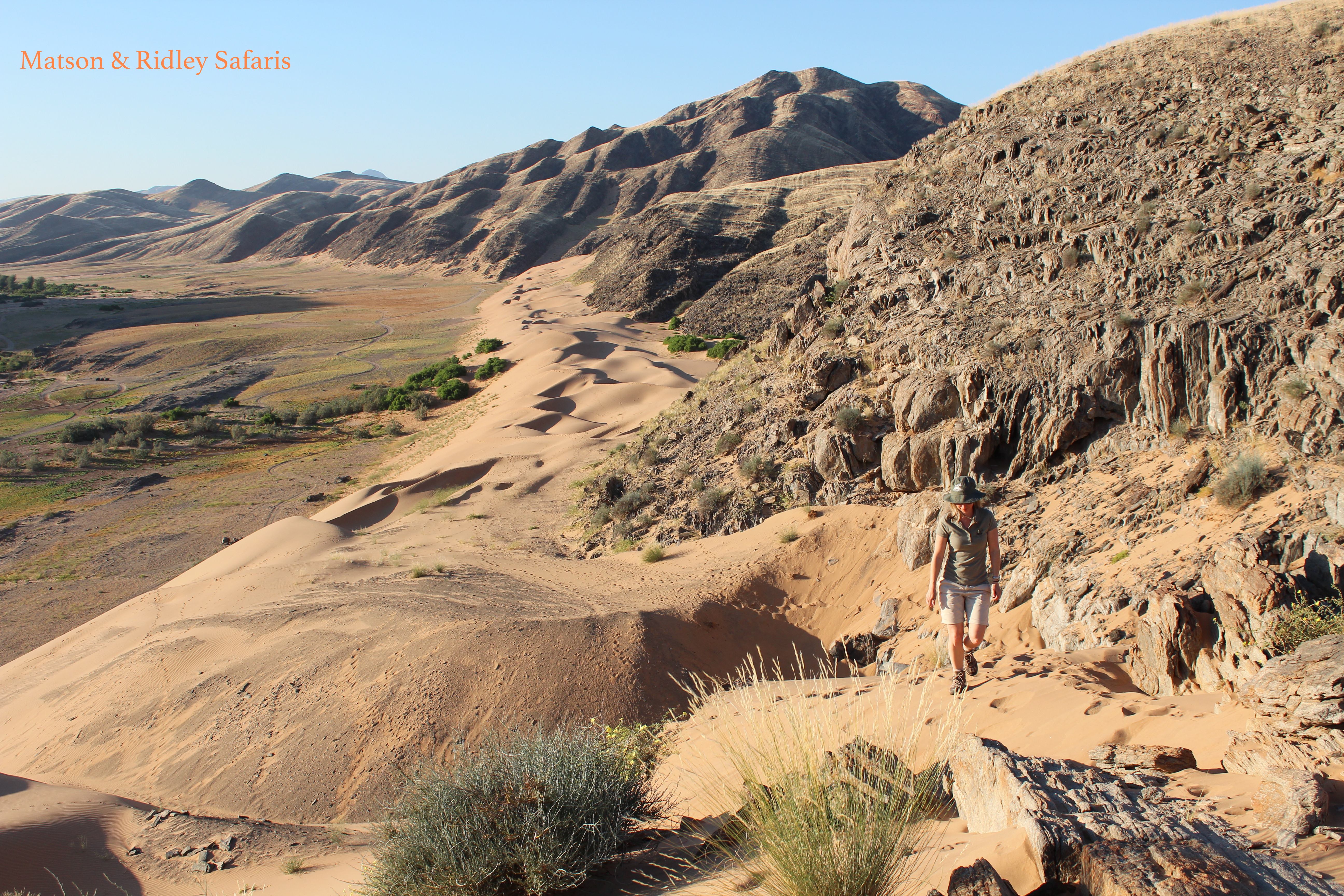
Well of course I have many more photos but there are way too many to share here. Serra Cafema is one of those places that you have to see to believe. Like Maggie kept saying as we drove in from the airstrip, “This is just mad!” and it really is hard to believe such a landscape exists in the modern day. It’s getting harder and harder to find these truly wild places. Of course it’s not without its human impacts, but the Himbas are part of this environment and custodians of the land. As the landlords of the Marienfluss Conservancy and Serra Cafema Camp, it’s up to them to conserve this region, their home. By going there to visit, we all contributed to their livelihoods through ethical tourism, and with the potential threat of the government building a dam on the Kunene that would flood part of the region, the income and jobs that Serra Cafema provide are essential to the future of this area. I can’t wait to go back…. I think Chuan Fong summed it up best when we were standing on a mountain overlooking the Kunene on the last day: “This makes me happy.”
Who’s Coming to the Skeleton Coast with Me?
Last year, Hoanib Skeleton Coast Camp won Tatler’s “Most Out Of This World” award. I reckon it would have been a tough choice for this between Hoanib Camp and Serra Cafema, two of the most remote and wild-feeling places you’re ever likely to visit, both of them run by Wilderness Safaris. That’s why my May 2016 safari focuses on these very two camps. Because I reckon they’re both awesome and, frankly, I want to go back there! I want you to feel the magic of Namibia’s wild spaces with me and go home feeling like you’ve just touched the moon. The truth is, in the modern world there’s not many places you can go where you are truly away from it all, hundreds of kilometres from civilisation and the things that own us (television, smart phones, meetings, commuting…). You won’t get a better escape than among the desert-dwelling animals and plants of Namibia’s North West region.
Right now I’m recruiting for my safari there in May next year (2016), which is already half full (up to a maximum of 12). Read on if you’d like to know more and get in touch with me here to sign up.

Can you see yourself here? (I can!) Serra Cafema Camp is set in the middle of the desert on the Kunene River
Namibia – Desert Dreaming Safari
If you’ve never experienced Namibia’s north west then you’ve got something special to look forward to! If you’ve ever dreamed of visiting the spectacular Skeleton Coast, meeting Namibia’s traditional Himba people, and spending time with desert dwelling elephants and lions in an environment that is wild, remote and pure adventure, then this is the safari for you.
Dates: 20- 27 May 2016
This luxury, conservation-focused safari kicks off on 20th May in Windhoek with a night at the Kalahari Sands Hotel, and then we’re off the next day by plane to Hoanib Skeleton Coast Camp for 3 nights. On our second day, we’ll do a full day fly-in excursion to the Skeleton Coast itself, where we’ll see shipwrecks, desert dunes, seals and so much more. I’ll spend time telling you about the behaviour and ecological functions of the elephants and other species in this unique, fragile region.
On 24th May, we’ll fly to Africa’s most remote and my favourite camp, Serra Cafema and spend 3 amazing nights there. I don’t know how to describe this luxurious camp – it’s so much more than an oasis in the desert. You just have to see it to believe it. A community partnership with the local Himba community is one of the unique features, meaning it really makes a meaningful contribution to the locals and hence to conservation. You’ll see how the Himbas live and breathe in landscapes so big you will feel like the tiniest of insects in this vast landscape. Serra Cafema camp also made the Top 50 in “Africa’s Finest” for its contribution to conservation.
Finally on 27th May, we’ll all fly back to Windhoek and bid farewell.
Price: SING$10,000/person sharing (approx AUD$9350 at current exchange rate on 3/3/15)
All meals and drinks are included in these safaris (with the one exception of the first night in Windhoek on the Namibian safari), all luxury accommodation, all park and community fees, two activities daily, internal flights between camps, laundry, and donations to relevant conservationists we spend time with. Travel insurance is compulsory and can be added separately. International flights to and from your home town are not included.

The local Himba people benefit from the community partnership with Wilderness Safaris that is Serra Cafema Camp
Remember that the price also contributes to local conservation projects and keeps the wildlife and traditional communities you meet along the way afloat – so it’s really as good as a donation to charity. You’re also keeping my conservation work going, as my safari company is what pays the bills and allows me to do my conservation work for free.
Group size is limited to 12 people and this trip is currently half full. Family groups are welcome. Please get in touch with me now if you’d like to sign up for this amazing adventure!
5 Reasons To Visit Namibia, Land of Big Skies & Desert Dunes
Where should you go on safari in Africa? The choices seem bamboozling at first – Kenya, Tanzania, Zimbabwe, Botswana, South Africa… All are amazing and have their own unique angles and experiences, but I’m going to share a few reasons why I think you should consider one of my favourite safari destinations – Namibia. If my photos below don’t convince you, consider these five reasons why Namibia should be on your bucket list.
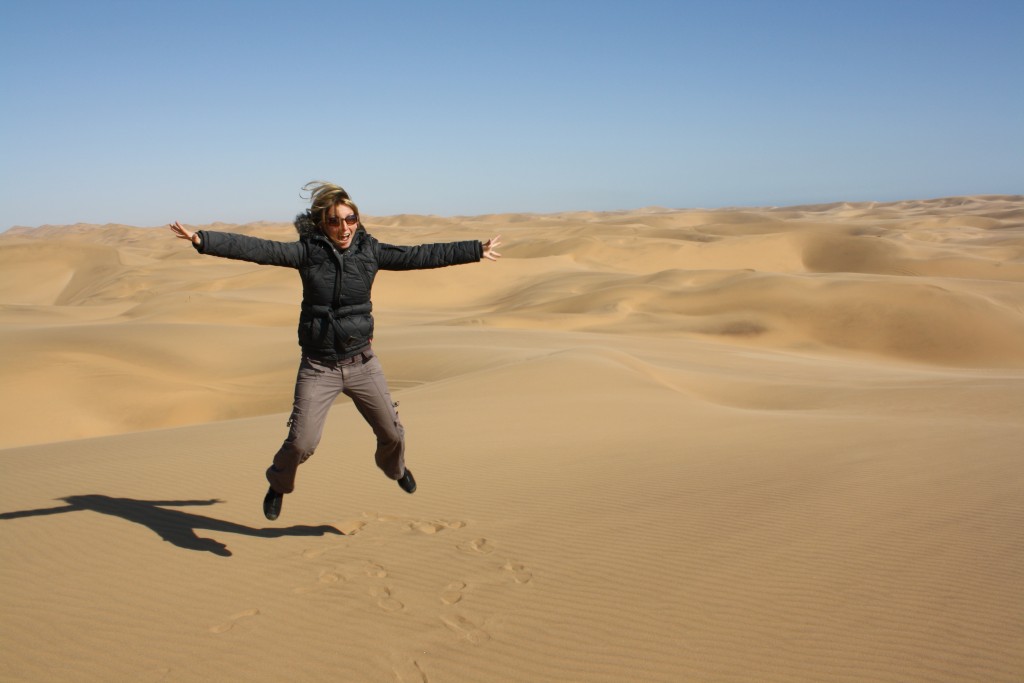
Don’t ask me why, but even if you’re not the kind of person who tends to do random jumps in the sky, Namibia’s vast sands will make you want to
1) Safety.
Namibia is one of the safest countries you can go on an African safari. A whole lot of people don’t realise that there are less safe countries to visit in Africa (Nigeria, Congo and parts of West Africa spring to mind) and there are much safer countries, like Namibia. In my opinion, the two safest places to travel in Africa are Namibia and Botswana, partly because of their low human populations, and secondly because you don’t get the same kind of crime that you get in some other countries (like South Africa). Namibia is fabulous for families and first timers to Africa. We always used to call it “Africa For Beginners”. Lots of people do self drive safaris there because the roads are good and the scenery is spectacular.
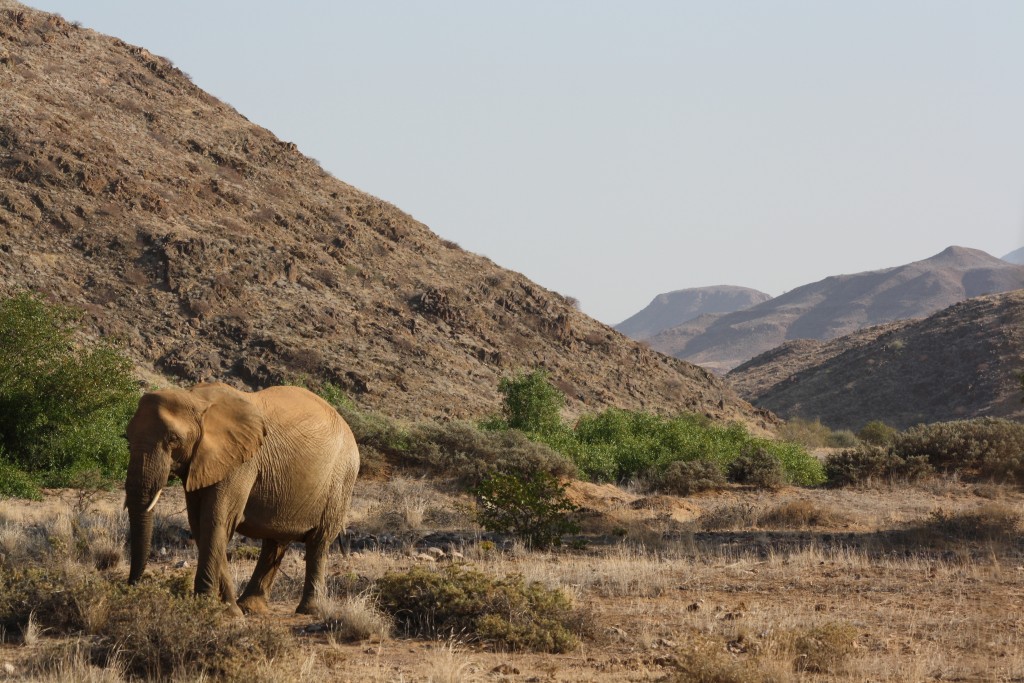
Desert elephants in Namibia. These are savannah elephants with special adaptations to life in the desert.
2) Space.
Most of us live in a world that is full of people living in close proximity to each other. We are constantly bombarded with commercialism and consumerism, bright lights, loud noises, all those things that are part of capitalistic life in the modern world. Namibia’s desert is the opposite of all that. There’s something about being miles from anyone else, enveloped by vast spaces and enormous skies, that provides a unique kind of escapism. For me, it’s a place I can breathe.
3) Conservation.
More than half of Namibia is under conservation protection. I mean, think about that. It’s amazing. Australia’s only got about 12% under protection. It’s not all national parks in that 50%+ under protection in Namibia, although at almost 20% in national parks that’s a big chunk too. The key is all the communal conservancies managed and legally run by the local ethnic groups. Namibia is one of the finest examples of community-based conservation you’ll find on the planet and tourism is a big part of that success story. In Namibia they’ve really got their head around giving local communities benefits from the wildlife, and that translates back to their excellent conservation record. If you book an ethical safari through Matson & Ridley Safaris, you’re directly contributing to this conservation success. Read more about Namibia’s community-based conservation at the website of the Namibia Nature Foundation.
4) Unique wildlife
The safari experience you get in Namibia is like no other. You won’t get all of the ‘Big Five’ (lion, leopard, buffalo, elephant, rhino) on your first game drive. Namibia’s about quality, not quantity. What you will get is a single, regal, solitary oryx antelope standing on the desert dunes at sunset. You’ll get tall, white elephants in Etosha (in the dry season), coloured that way because of the white dust flung off the enormous pan. You’ll get tiny lizards that dance to stop their feet overheating on the boiling hot sand, and desert beetles with tiny ridges on their backs that trap the moisture from fog rolling in from the coast by standing into the wind on a ridge of sand. What you get there is unique desert-adapted wildlife in huge landscapes that even dwarf elephants.
5) Variety
On a single safari, you can experience the sandy orange dunes in the Namib Desert, the red, rocky volcanic landscapes of Damaraland in the north west, thorny bush lands and of course the famous Etosha salt pan fringed by short grasslands. In the north east you get big flowing rivers and in Bushmanland you get ancient, towering baobab trees. It’s incredibly diverse. You do have to cover a bit of distance as it’s a big country, but your money goes a long way in Namibia. There are also at least 11 ethnic groups in Namibia, from the traditional ovaHimba people to the cattle-focused Hereros and the San Bushmen.
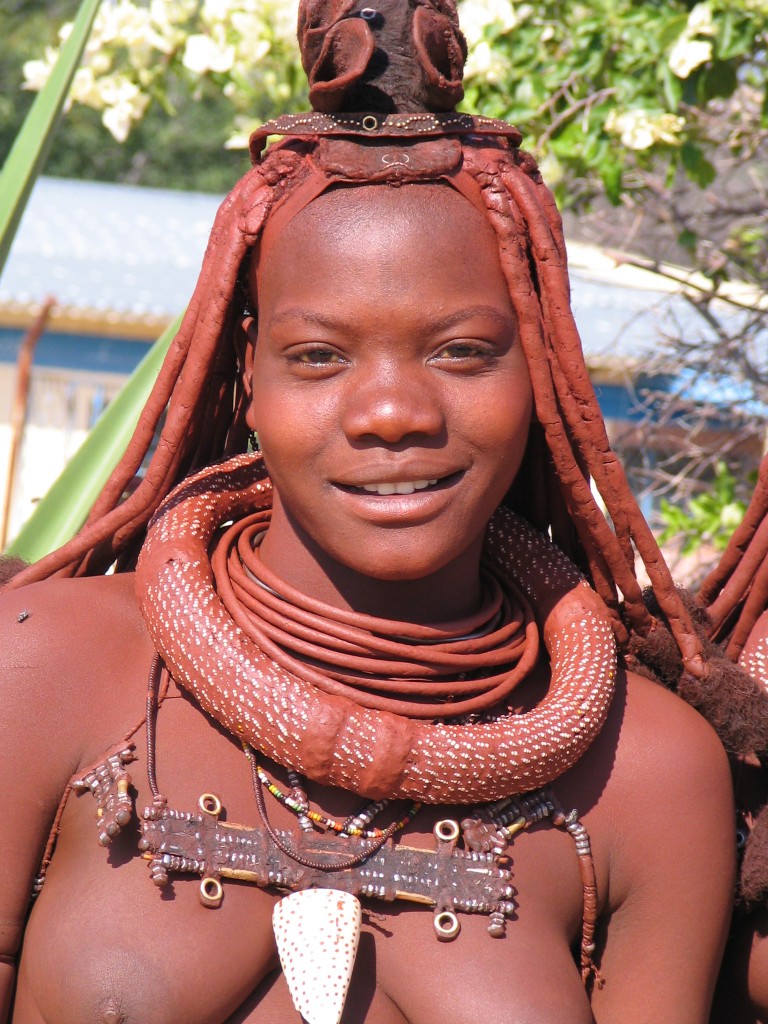
Meeting the local people while on safari is always a highlight, especially in areas where they benefit from the dollars you’re paying to visit them
I’ve got a few places left on my north west Namibia safari in May 2016, and only 1 spot for a single male for this year’s Namibian safari in September, so get in touch if you’d like to experience this amazing part of Africa with me. Alternatively, drop me a line if you’d like to book your own self-drive or fly-in safari in Namibia and I’ll plan an itinerary for you and your family that gives you your dream safari while making a difference in conservation. Namibia’s worth it, trust me!
Elephants, Safaris & More
First of all, just a quick reminder to book your spots on my 2016 safaris to Namibia and Zimbabwe if you haven’t already. I have very limited spots on these safaris, and they need to be booked a year in advance. For all the details of both safaris, please click here. Both are safaris that really make a difference in conservation and community development. In the Zimbabwean conservation safari in July 2016, you get to track rhinos with the pros, hang out with wild dog and hippos conservationists, and experience the amazing Hwange National Park, known for its large elephant concentrations & much more, and Victoria Falls. In the Namibian conservation safari, we’ll be visiting the north west of the country, focusing on the Skeleton Coast, spending time with desert elephants and the traditional Himba people. I can tell you from personal experience, both trips are mind blowing and life changing and the camps are as good as you’ll get in Africa!
Secondly, you may have heard that both China and Thailand are making some progress on clamping down on the illegal ivory trade. We’ve seen Thailand enforce a new law, the Elephant Ivory Act, which requires that all ivory be registered by the authorities by 21 April 2015 or face a penalty of 3 years in prison and/or a large fine. Some media sources are reporting that as a result the number of ivory traders has dropped markedly, as so many of them were unable to verify the origin of their ivory. I haven’t been able to independently verify this myself, and I believe there continues to be a major need for demand reduction in this country. Thailand has also instigated forensic technology to identify the source of ivory (Asian vs African) and will help police the trade.
China recently banned ivory carvings for a year, around the time of Prince William’s visit to Beijing, however this represents only a small amount of the ivory in circulation, and it’s really nowhere near enough to stop the problem. There’s a good article on this if you’re interested in learning more – click here. Prince William has become an outstanding advocate for stopping the demand for ivory and rhino horn and continues to speak out and use his influence for the cause. Check out his speech given recently in China by clicking here. But it’s going to take a lot more than is currently being done to reduce demand in China, the country most heavily driving the illegal ivory trade.
I’ve been working hard with the Let Elephants Be Elephants team this year to focus our awareness-raising efforts on Thailand this year – so watch this space for more information, coming up soon!
Finally, after a few lovely months back on home turf in Queensland, Australia, our family is relocating again, this time to Amsterdam in the Netherlands where my husband Andy is taking up an exciting new job in the environment movement. I’ll continue to update you on all things elephants and African safaris from my new base there.
My new company – African safaris that make a difference
Happy new year Africa-philes, elephant lovers and friends of the planet!
I’m kicking off the new year with some exciting news. It’s been in the works for a little while, and won’t be a surprise to many of you. This year I’m finally turning my love of Africa into a business. Many of you have been on safaris based on my advice on where to go and what to do in the past and some of you have even joined me on safari. Now you can actually book your African safari through my new company, Matson and Ridley Pte Ltd, a fully licensed travel agency, and join me in the land we all love for a very different kind of African experience.

